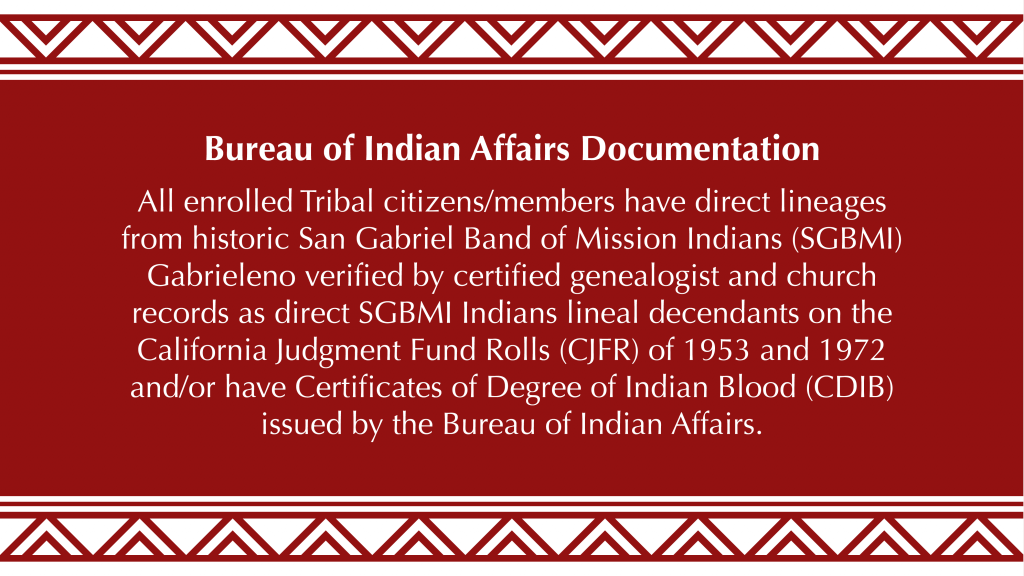Gabrieleño/Tongva San Gabriel Band of Mission Indians
P. O. Box 693
San Gabriel, CA 91778
Tribal website: https://www.gabrieleno-nsn.us
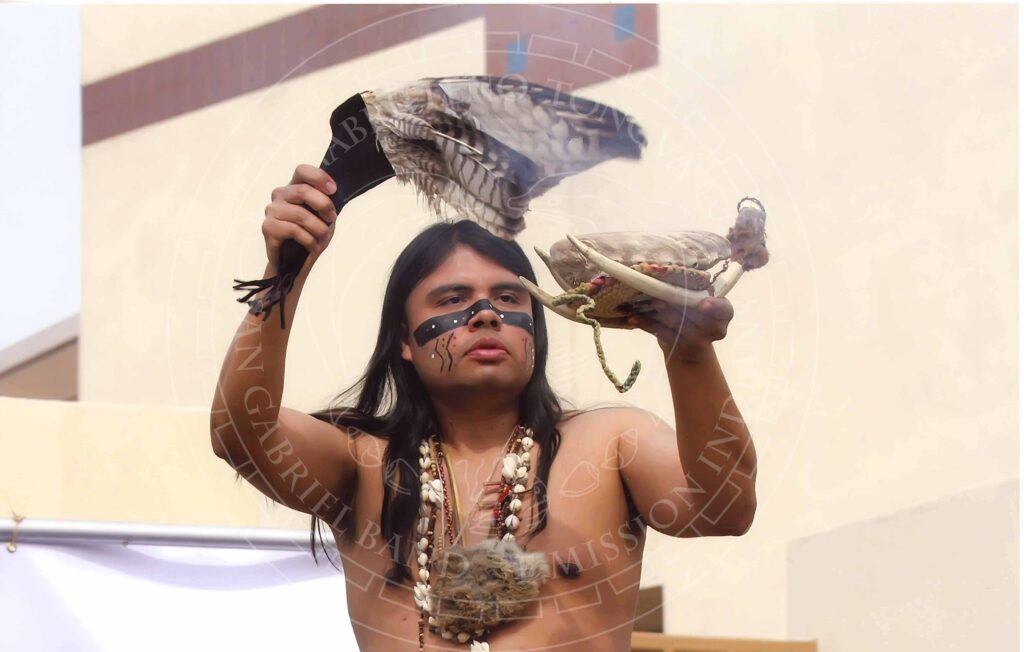
Sage blessing of our history and continued presence by SGBMI Spiritual leader Andrew Morales
Welcome
We the San Gabriel Band of Mission Indians (SGBMI) honor thousands of our ancestors who were placed under the servitude of the mission system and subsequent colonization by European settlers. We are the descendants who survived the enslavement, stripped of our existence, traditions, and land. We work tirelessly to remind politicians, educators, and the public that we are still here.
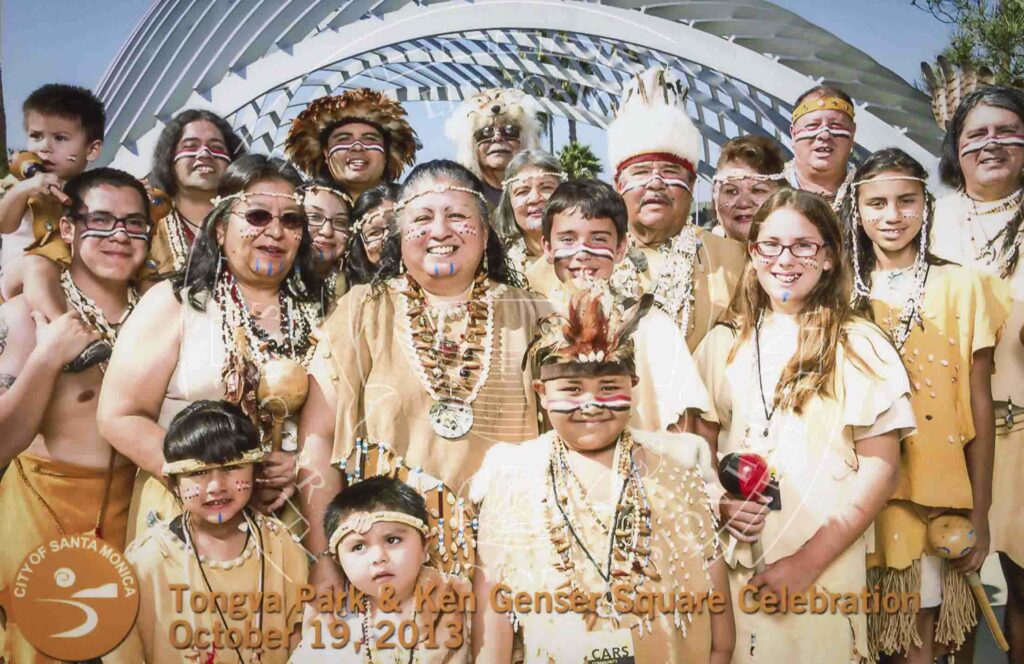
Tongva park performers (2013)
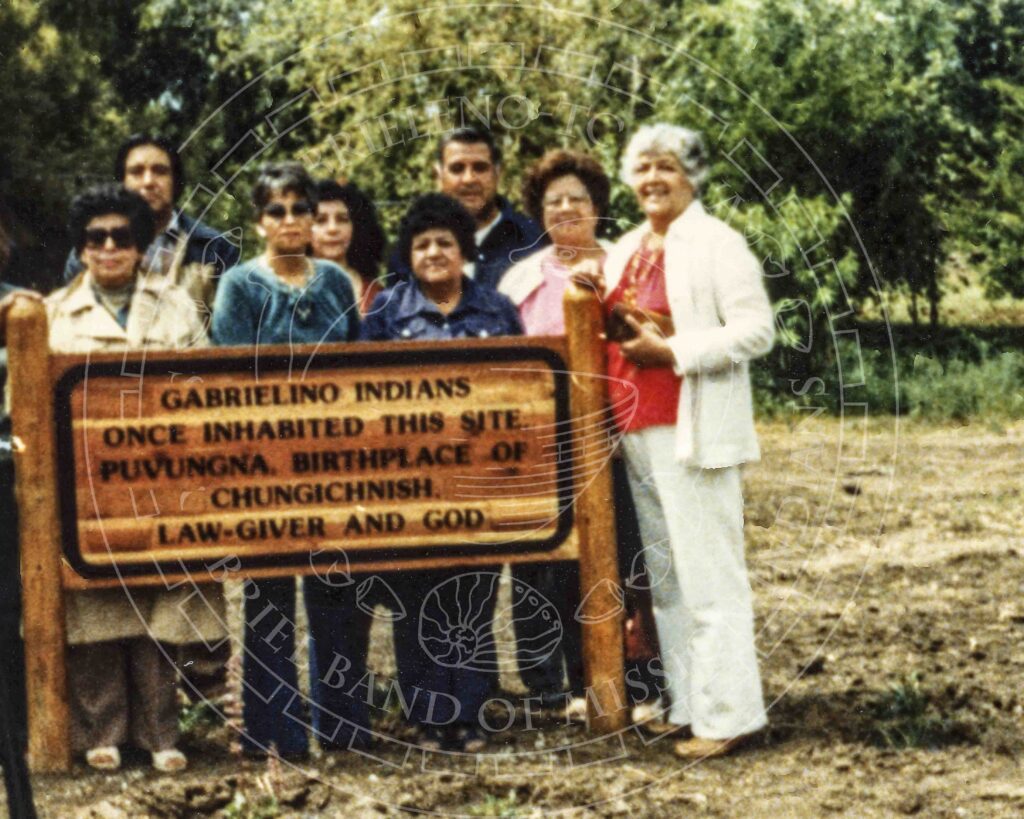
Elders standing by signage acknowledging Puvungna village and Chungichnish at CSULB . Our first tribal reburial after the Native American Hertiage Commission was formed in 1976. We were the first and only Most Likely Descendants (MLD’s) for the Gabrieleno/Tongva tribe. (January 1980)
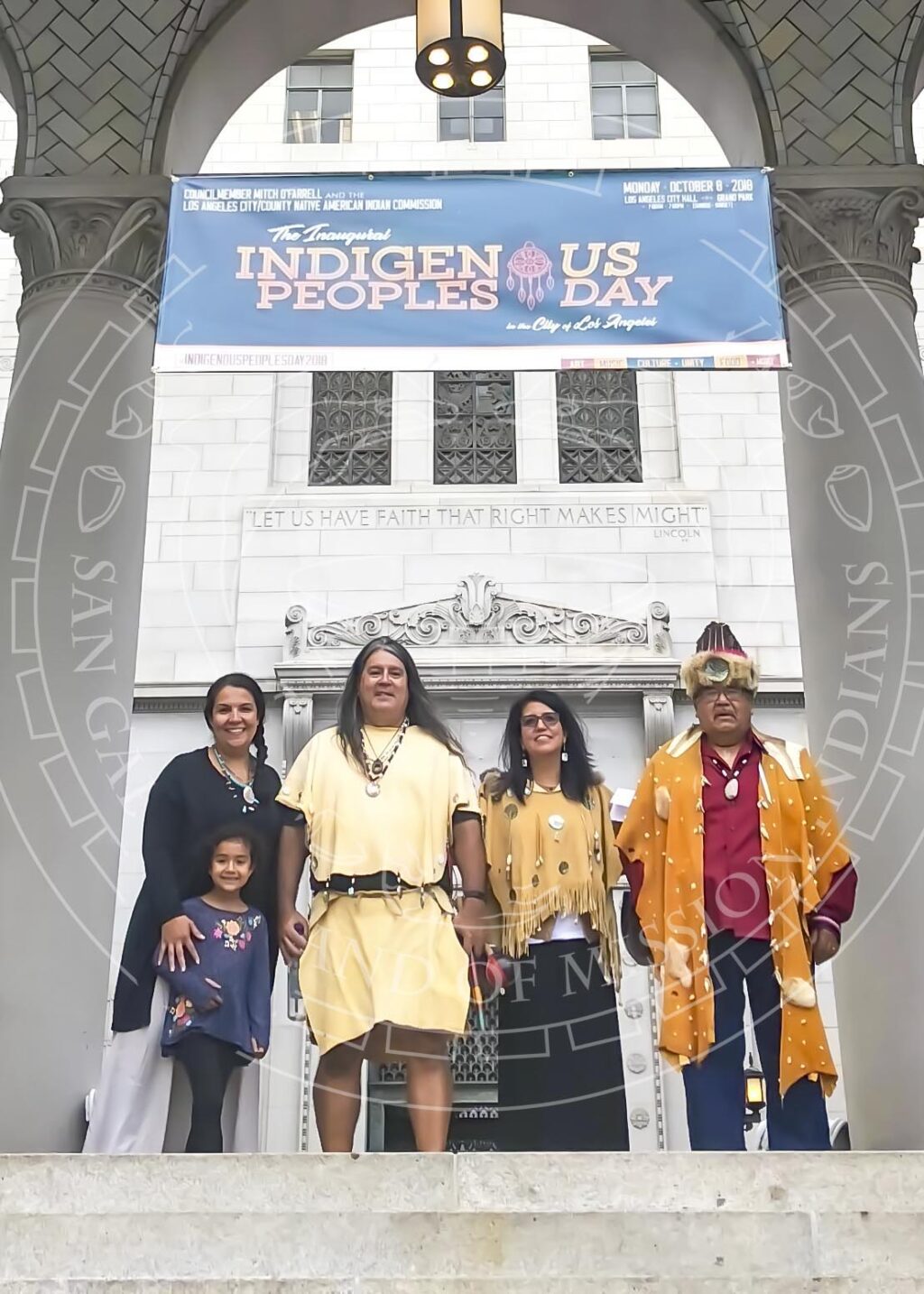
Tribal members participate in Los Angeles’s First Indigenous day (2017)
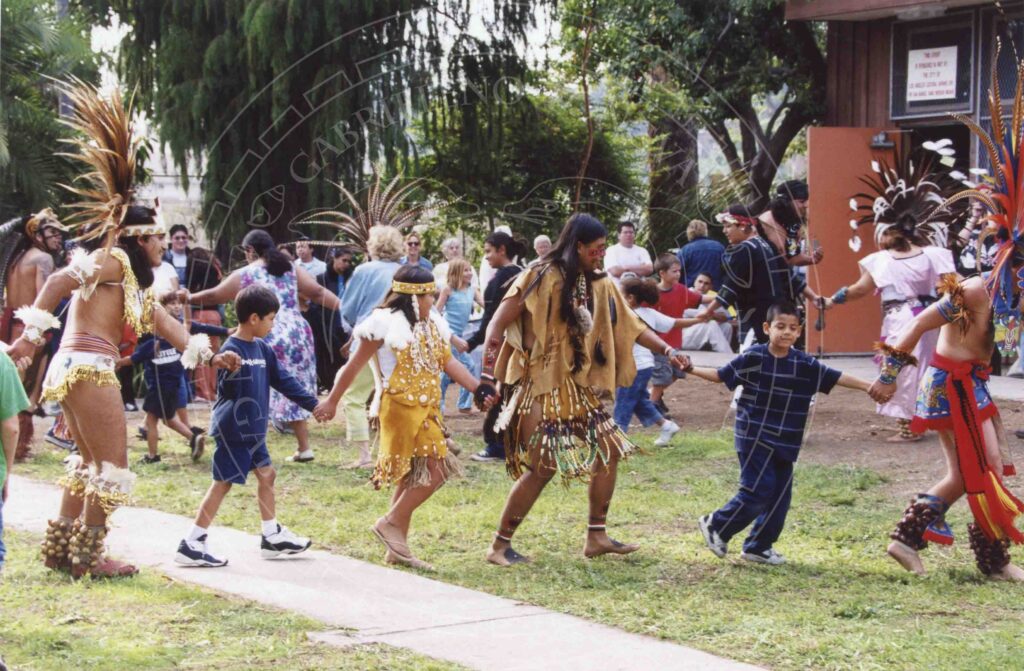
Tribal Dancers interacting with the public in a circle dance Kuruvungna Sacred Springs, Santa Monica, California.
We have suffered the same atrocities as other tribes in California and across the United States, we have the same connection to the environment, retain similarities in our regalia, culture, traditions, and beliefs.
History has proven it is impossible to respect and honor a culture if you do not understand the history. We have been the recipients of an erased history that is being carefully and respectfully stitched back together. Our people and culture were almost wiped out of existence, three times within the past 249 years; in the wake of Spanish rule, the Gold Rush, and Anglo colonization. Survivors had two options: assimilate or run away to distant reservations. We survived the 1852 Bounty by California’s first Governor to kill and eradicate Native American men, women and children.
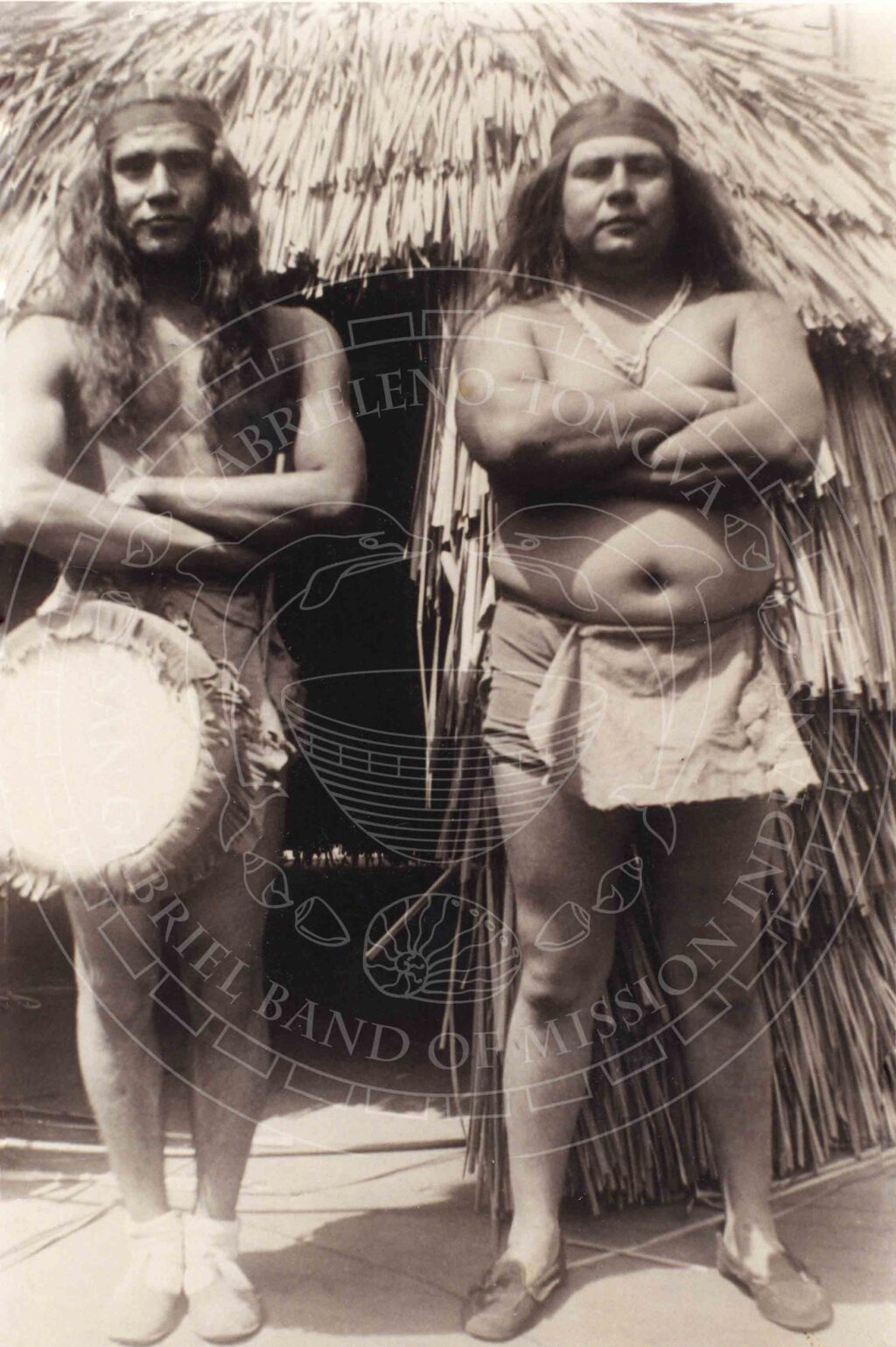
Brothers, Ancestors and Tribal officers Joseph and Arthur Morales (SGBMI). Our First known Tribal dancers and participants in the San Gabriel Mission Playhouse Reenactment Plays.
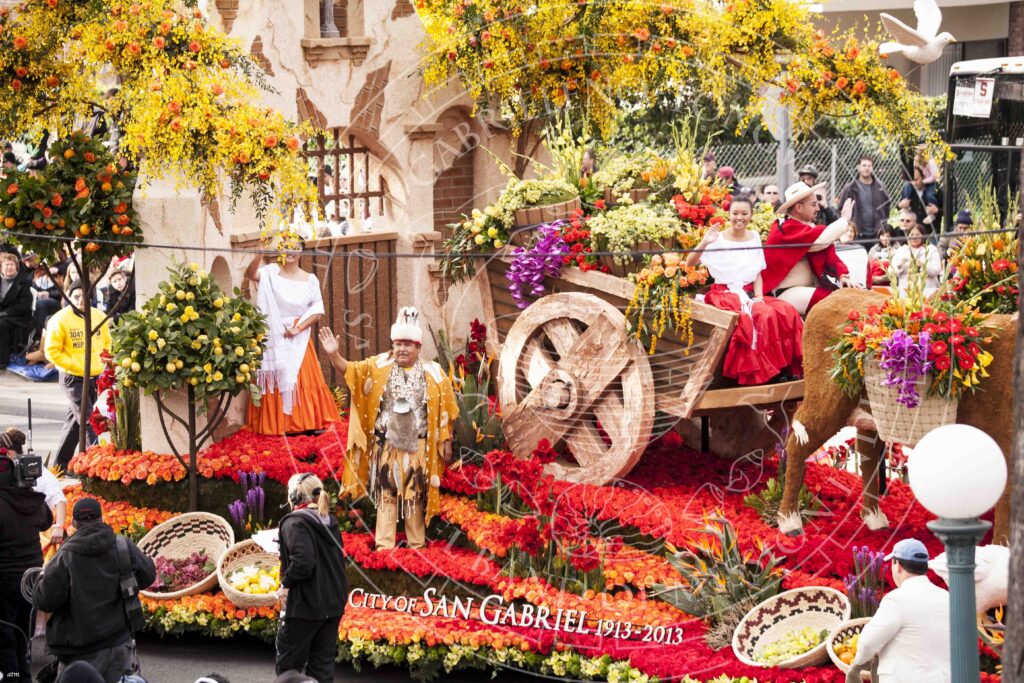
SGBMI Chief Anthony Redblood Morales and other tribal members participate in the Pasadena Rose Parade (2013 )
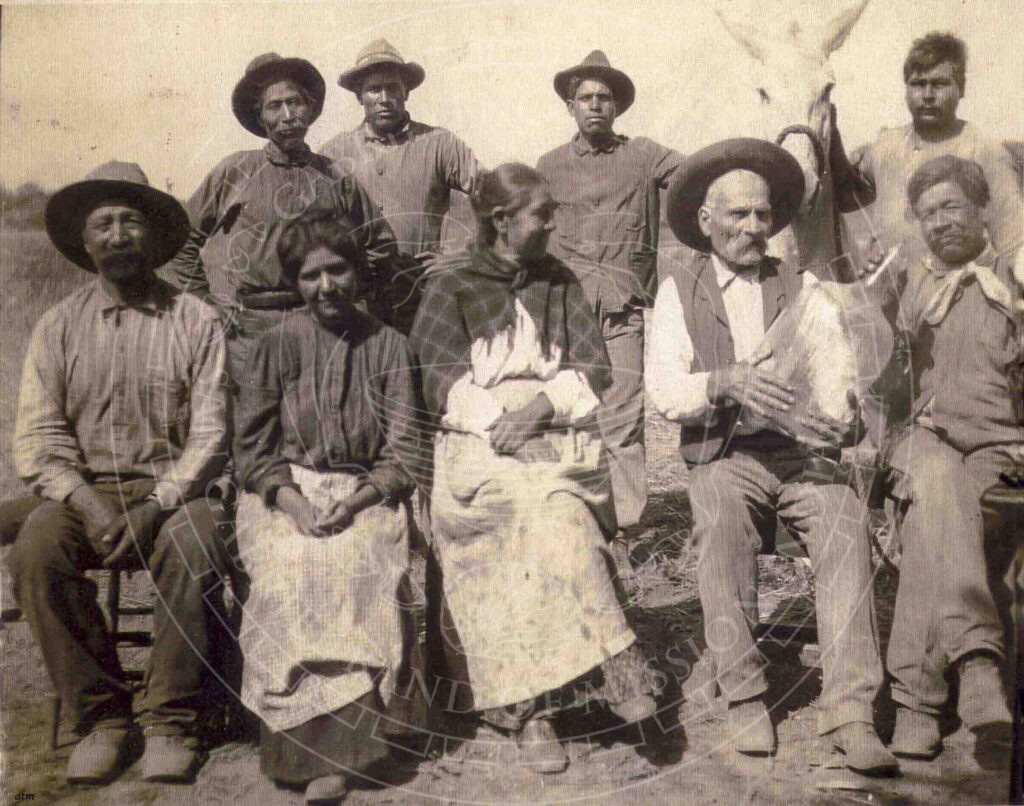
Front Row: Modesta Valenzuela Morales on the left, her sister Soledad on the right. Francisco Valenzuela (Father) to her left, including family and ranch hands (Circa Late 1800s)
The Interior Department acknowledged our existence by reaching out to Tribal Members who registered in the 1928 Indian Roll. This acknowledgement afforded The San Gabriel Band of Mission Indians to be included in the 46 Bands of Mission Indians under the Indians Claim Commission. Our tribe was a claimant in the Indian Claims Act of 1946 and disappointed with the outcome.
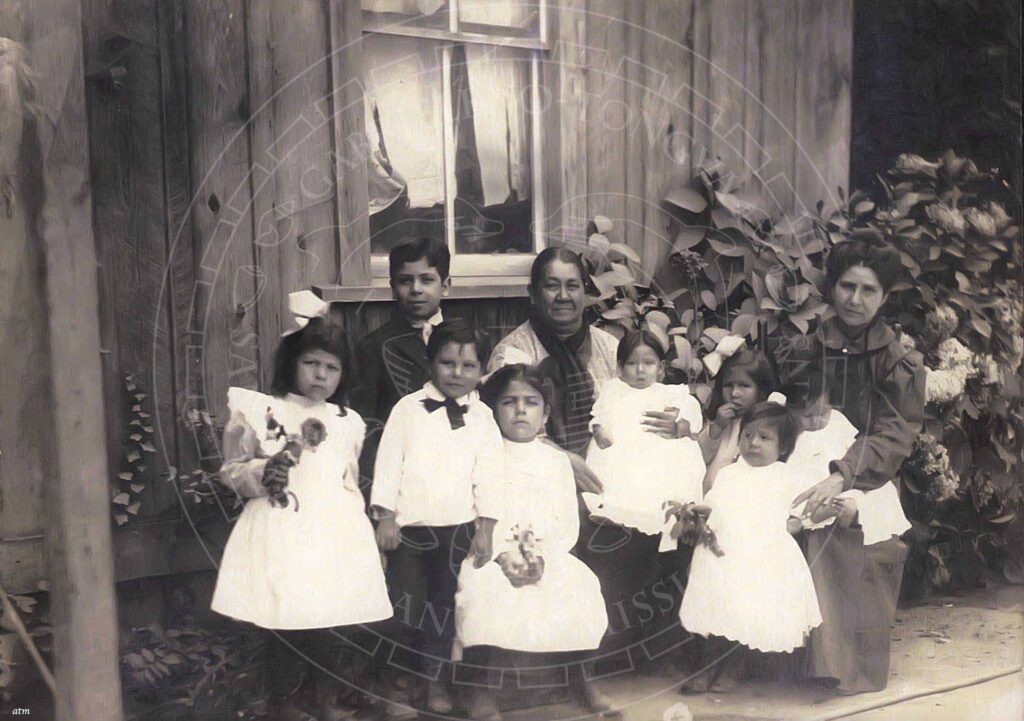
Presentacion Lopez Morales, full blooded San Gabriel Band of Mission Indian ~ Gabrieleno/Tongva. Last known Morales family member to be fluent in our language. Modesta Valenzuela Morales on the far right.
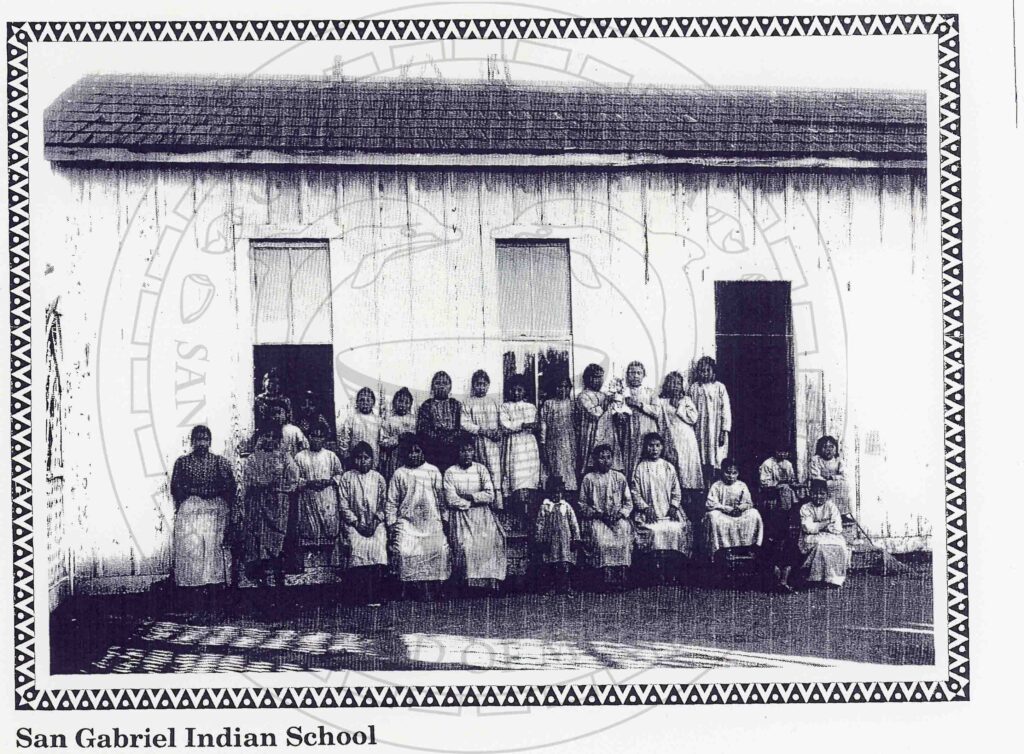
San Gabriel Indian School (date unknown)
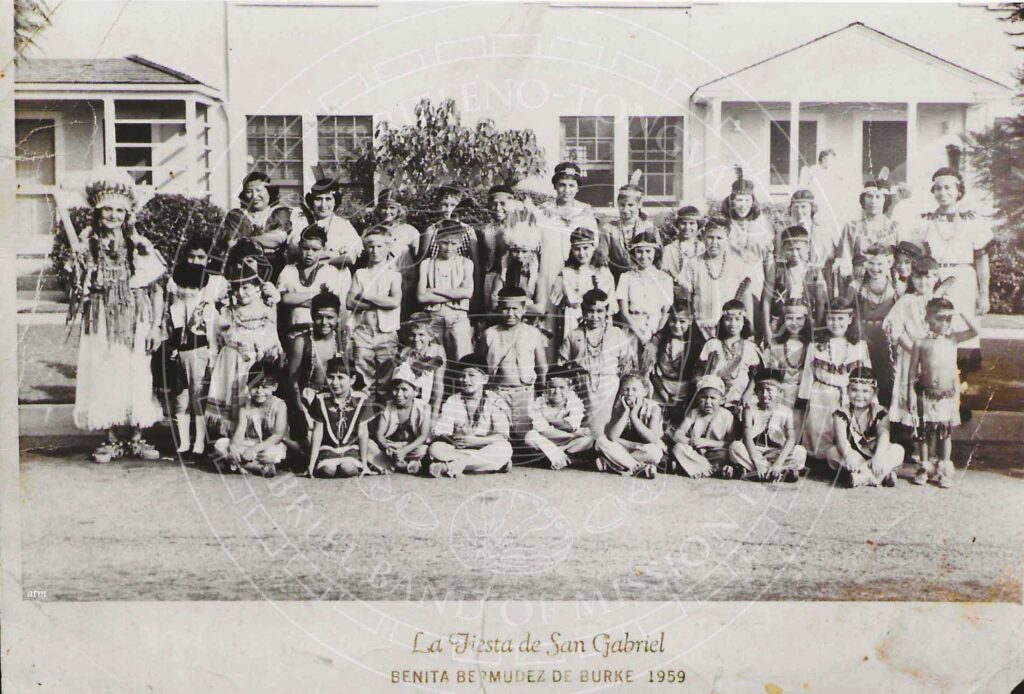
Benita Bermudez De Burke gathered Gabrieleno/Tongva Children and others from the neighborhood yearly to represent the continued existence of our Tribe (1959)
We the SGBMI, occupy a territory with incredible land value. Los Angeles, Orange, and a portion of San Bernardino Counties, as well as the Southern Channel Islands. Santa Barbara, Santa Catalina, San Nicholas & San Clemente Islands. It is indisputable this large region was inhabited by the Gabrieleño-Tongva San Gabriel Band of Mission Indians.
The San Gabriel Band of Mission Indians has been specifically acknowledged by the State of California. We have also been recognized by the County of Los Angeles and the Cities of San Gabriel and Los Angeles. Our Tribe maintains contact with and in collaboration and partnership, with all departments at the city, county, state, and federal level for the advancement of Native related issues.
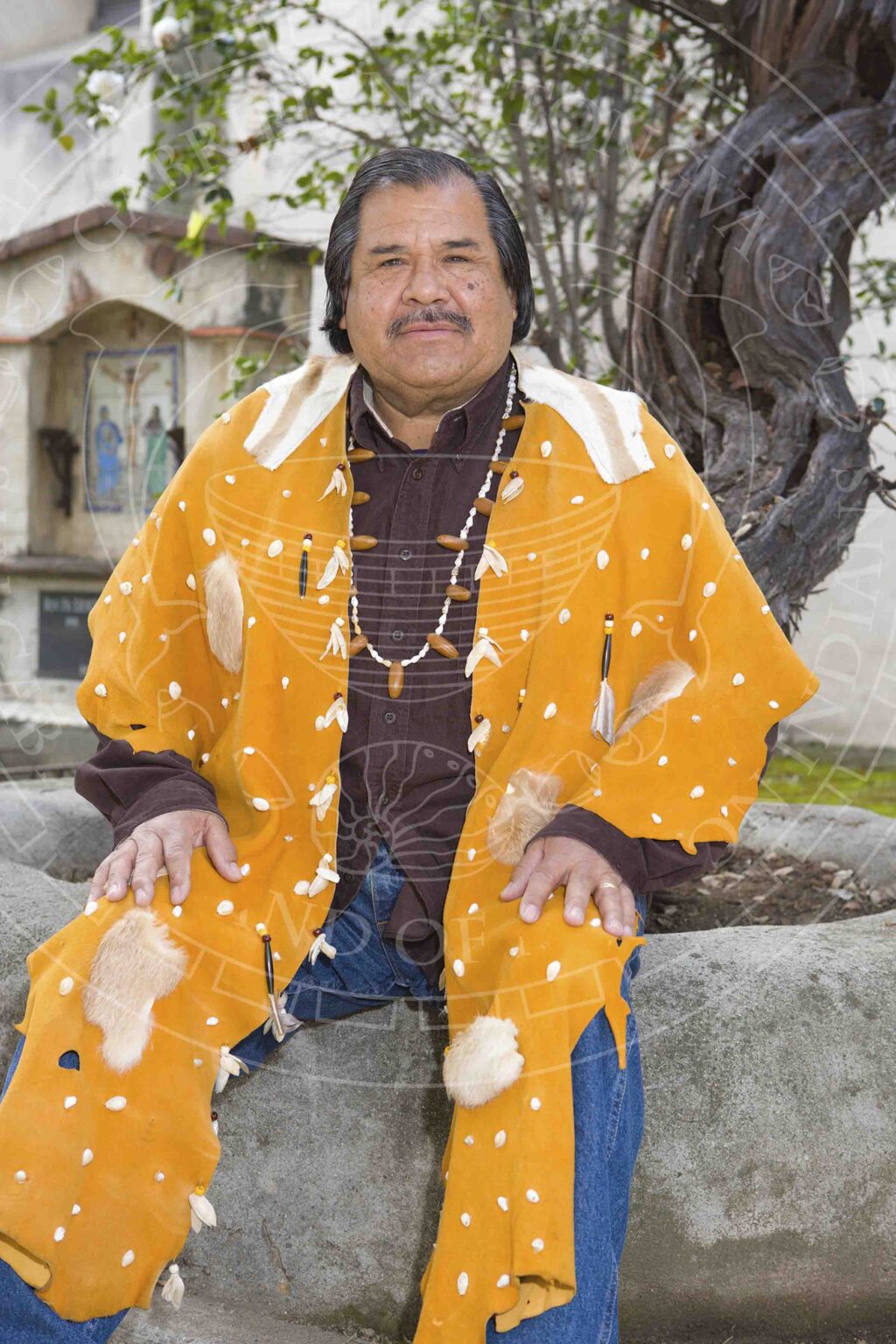
. Chief Anthony Red Blood Morales. Photographed at the San Gabriel Mission for publication in the O, My Ancestors book. Chief Morales has been the SGBMI Chief since 1992.
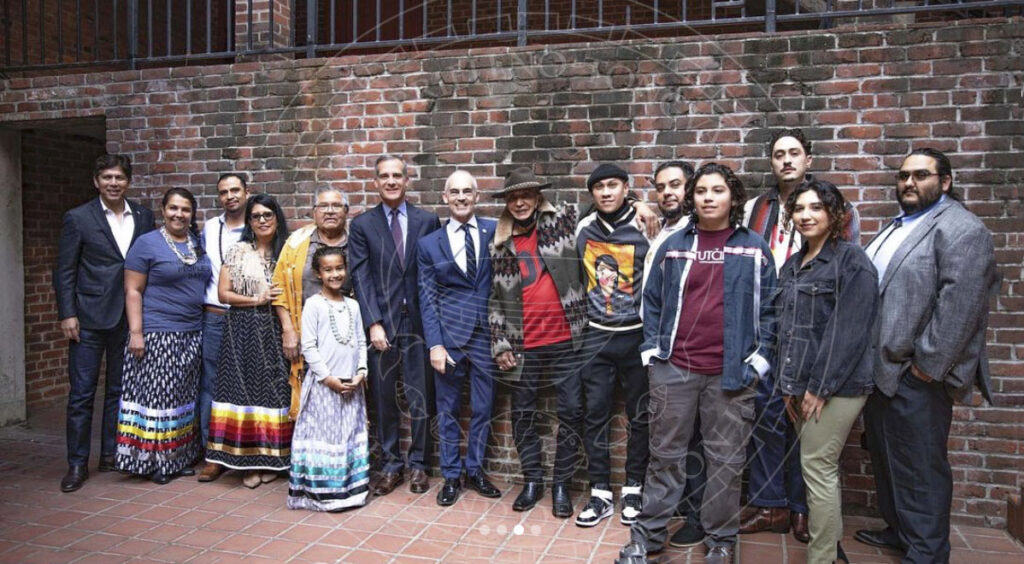
Indigenous Day in Los Angeles along with members of the San Fernando, Fernandeno Tataviam (2021)
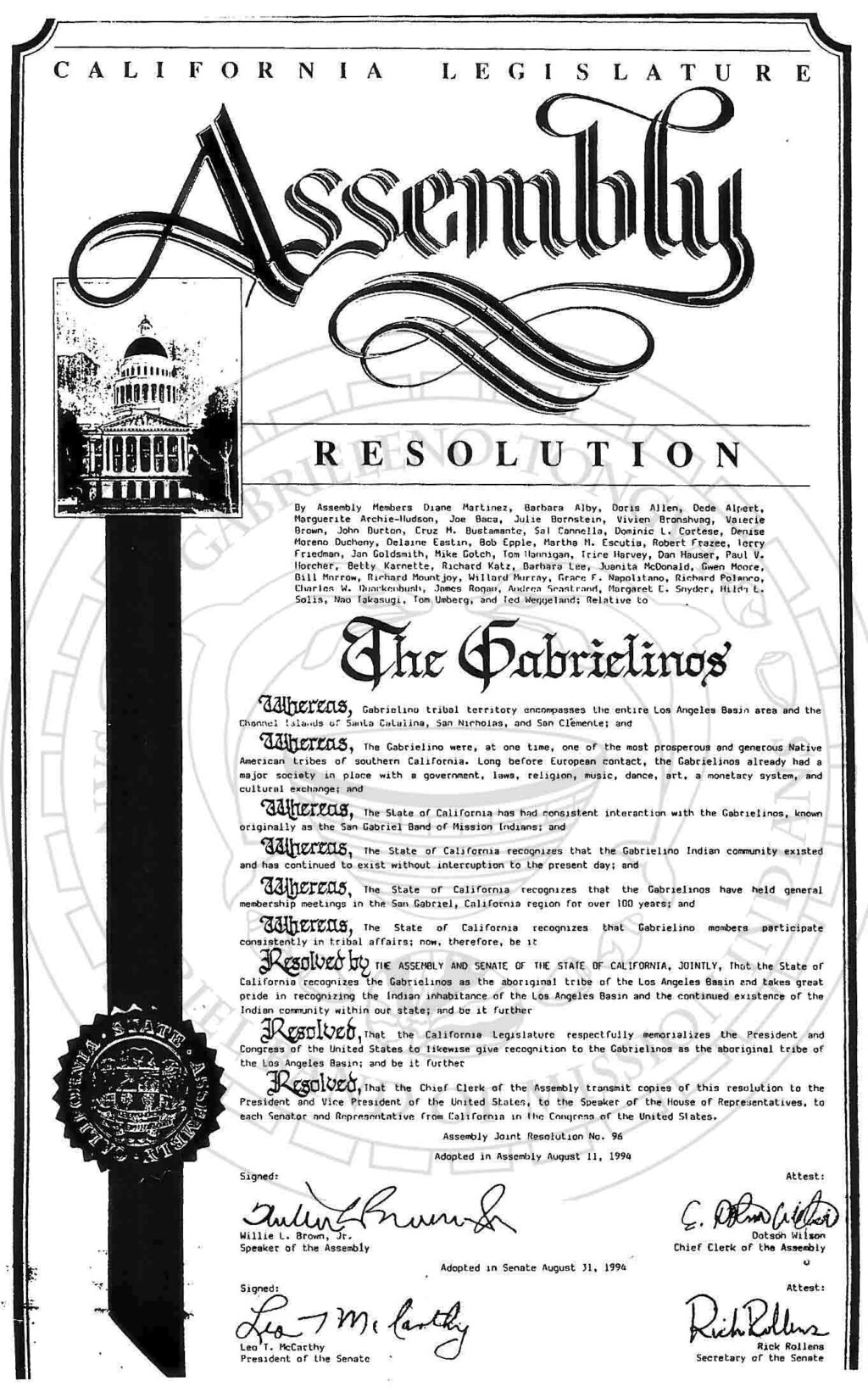
Copy of the SGBMI California State Recognition certificate. Chief Anthony Morales accepted the recognition on behalf of the SGBMI. The certificate acknowledges our existence without interruption. (1994)
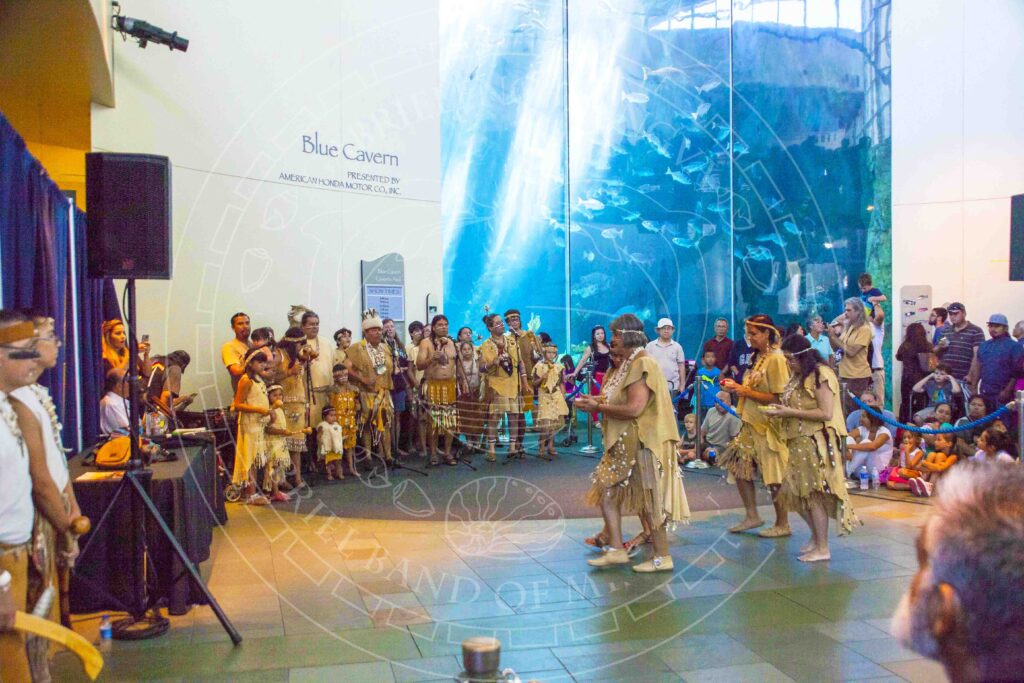
Tribal members and dancers have participated in a yearly Long Beach Aquarium of the Pacific event since its inception in 1998.
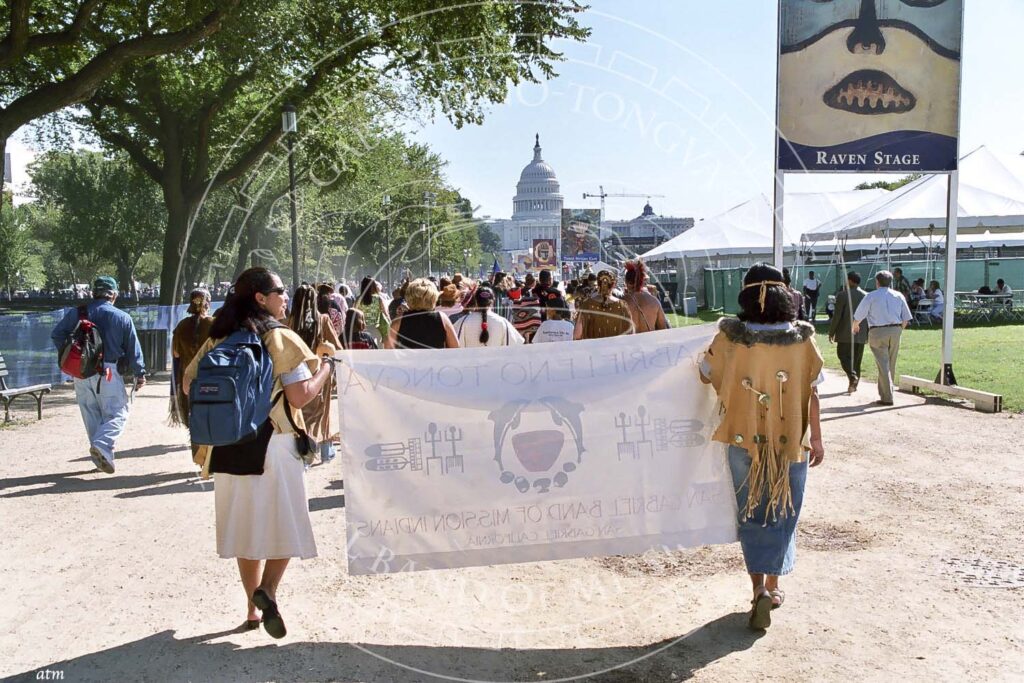
Tribal members participated in the Grand Entrance and Opening of the National Native American Museum in Washington D.C. (2004).
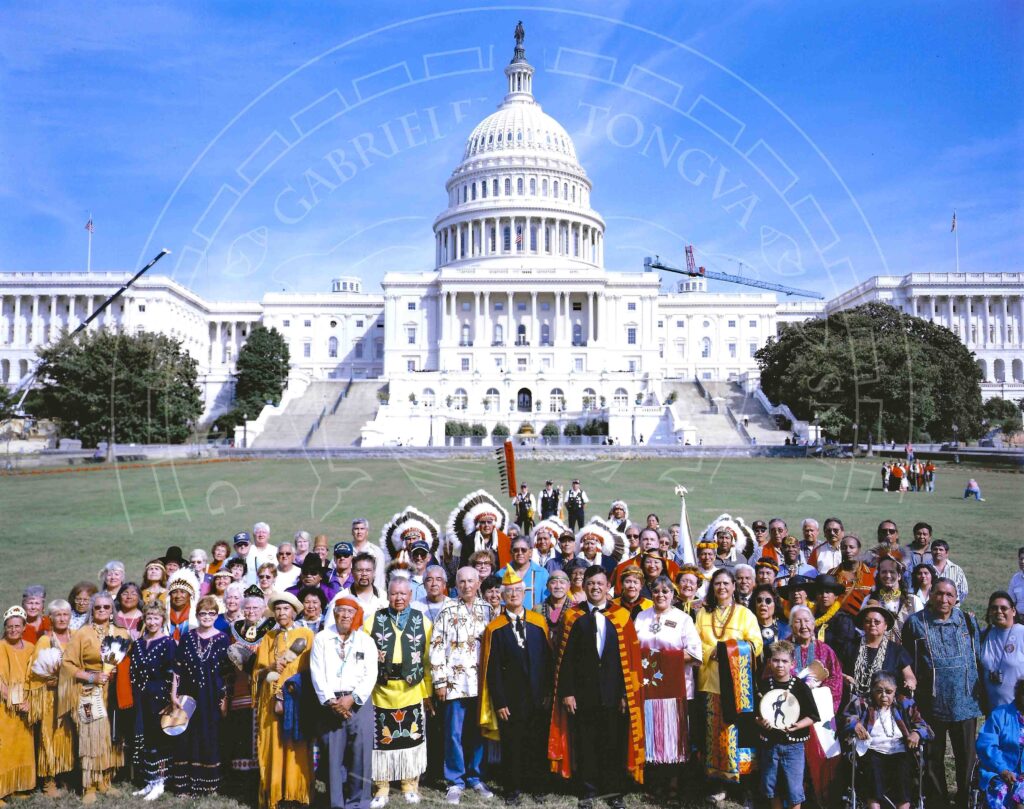
Tribal Elder participated in the Elders photograph Infront of the National Capitol, Washington D.C. (2004)
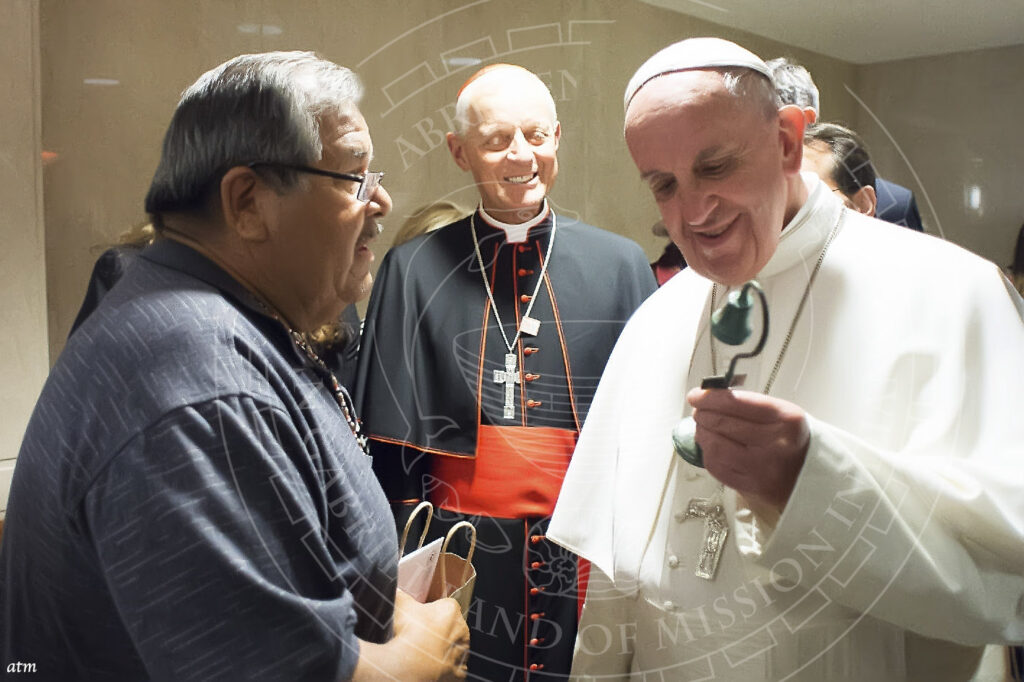
Chief Anthony Morales meets with Pope Francis in Washington D.C. (2015)
Many of our families, descendants of the San Gabriel Band of Mission Indians Gabrieleno/Tongva continue to maintain residence in San Gabriel and the San Gabriel Valley/ Sibagna. All our members have been required to provide approved documentation to verify their Gabrieleno lineage. Gabrieleno lineage has been verified by their Certificate Degree of Indian Blood (CDIB) with the Bureau of Indian Affairs (BIA), by Historian Thomas Workman Temple II, and records from the San Gabriel & San Fernando Missions. Some of enrolled members were the first designated Gabrieleno Most Likely Descendants’ (MLD) in 1979, by the Department of the Interior. Despite the different names, there is only one San Gabriel Band of Mission Indians. The SGBMI has an unbroken historical record.
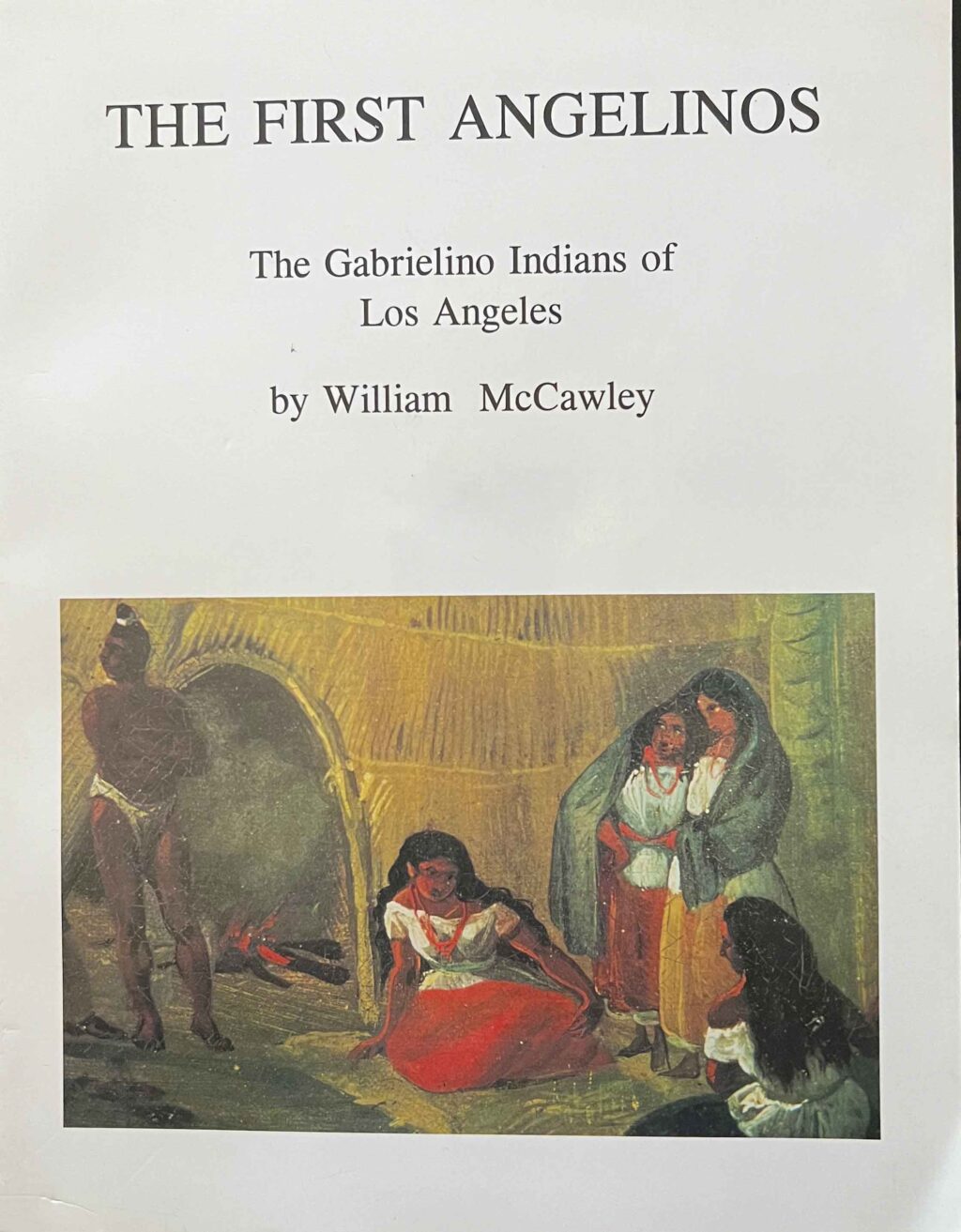
The First Angelinos – The Gabrielino Indians of Los Angeles by William McCawley.
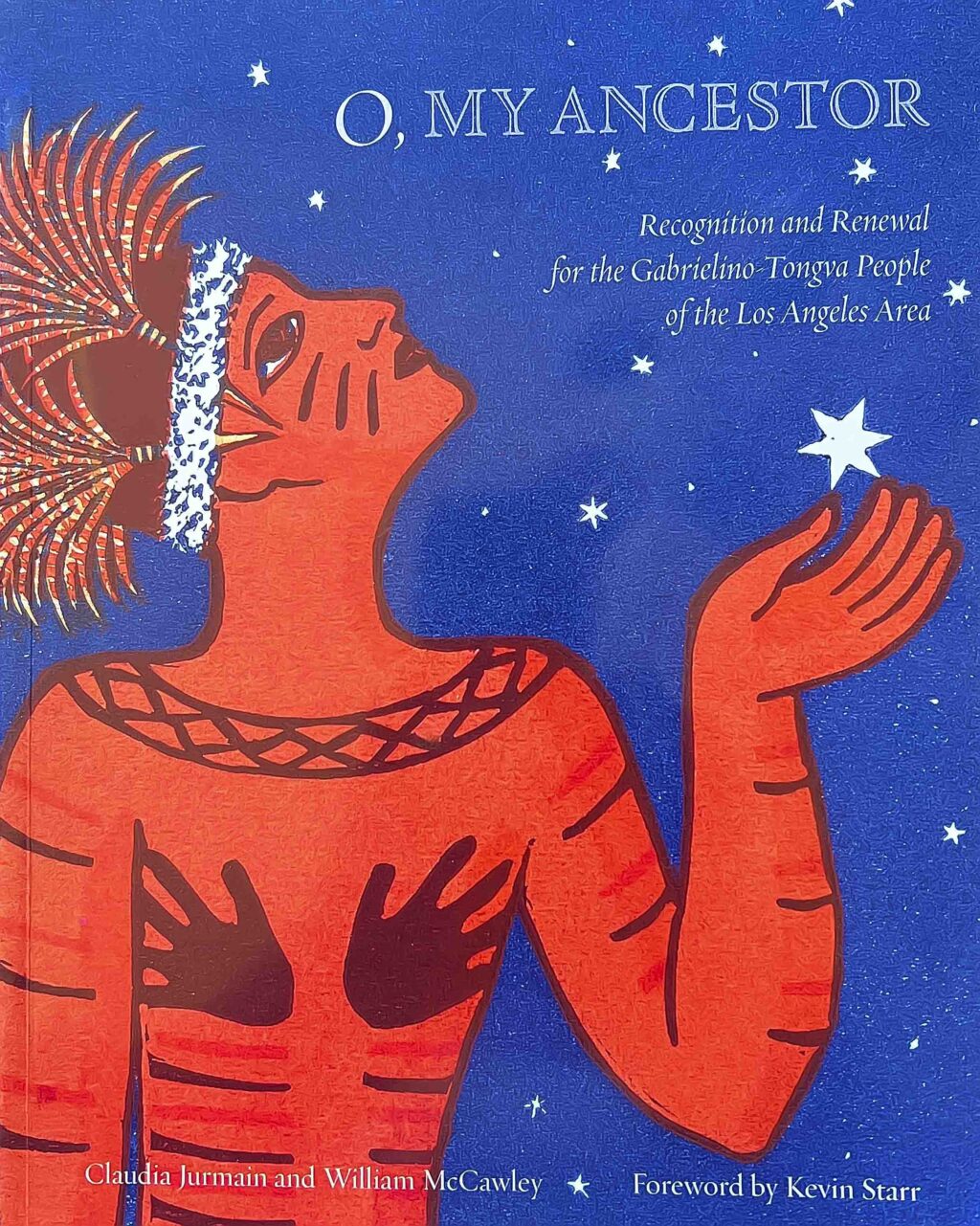
O, My Ancestor by Claudia Jurmain and William McCawley
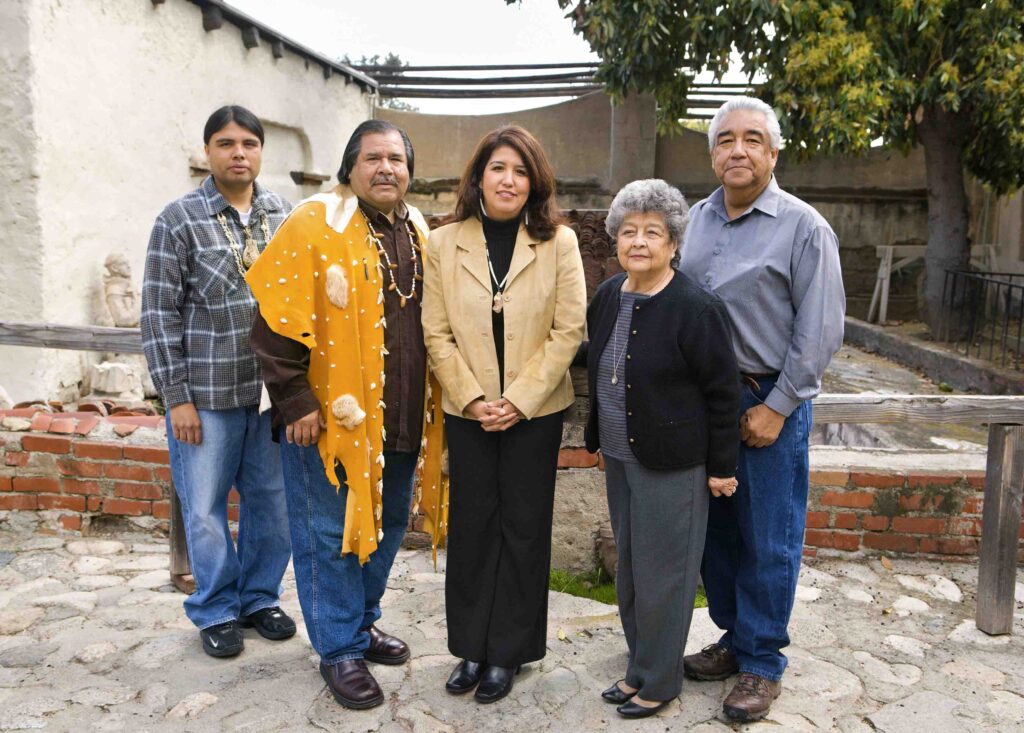
From Left to right. Andrew Morales, Anthony Morales, Kimberly Morales Johnson, Vivian Morales Barthelemy, Arthur (Art) Morales, Photographed at the San Gabriel Mission for publication in the O, My Ancestors book.
We remain dedicated to preserving our existence, cultural preservation, traditions, education, and history. We have maintained our continued community and existence since 1771. We also continue to participate in land acknowledgments, recent Land back and Indigenous Day Ceremonies. We have shared the beauty of our Tribal dancers who have performed for public events since 1995.
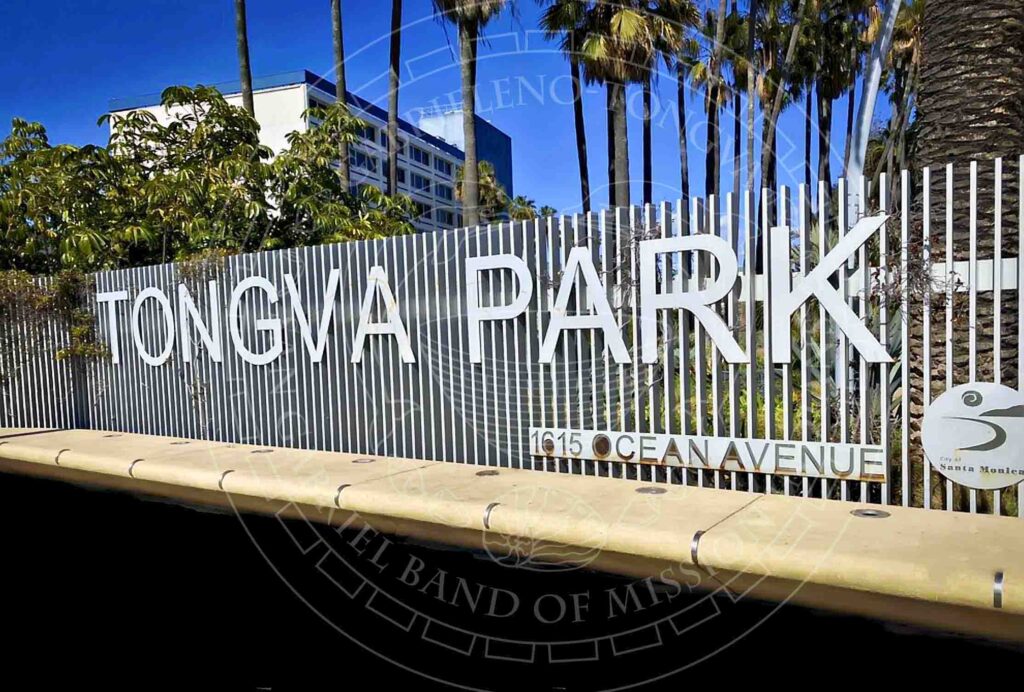
Tribal members and dancers participated in opening Tongva Park in Santa Monica (2013)
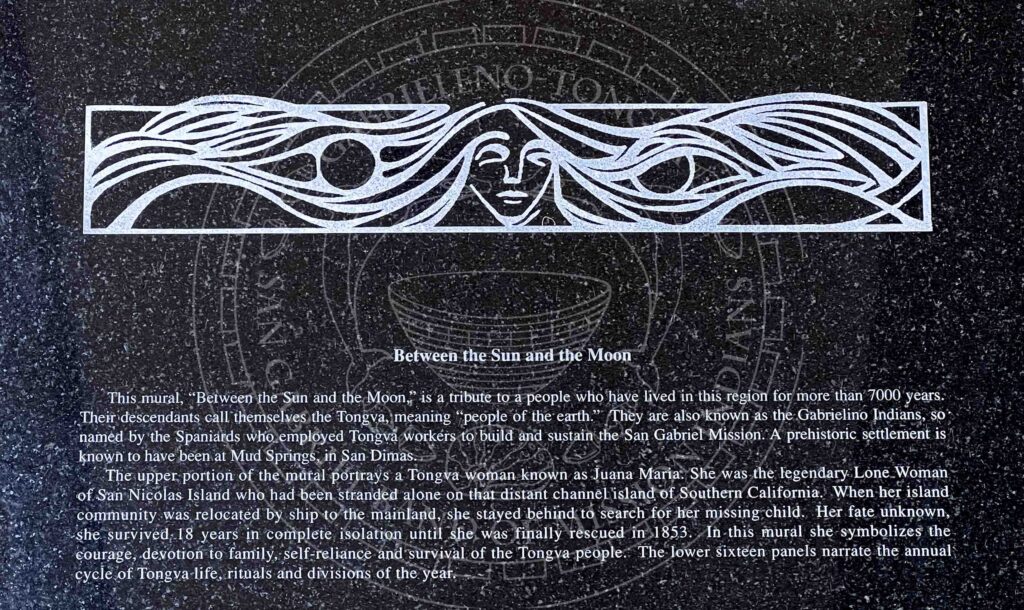
San Dimas City Hall Monument to Juana Maria.
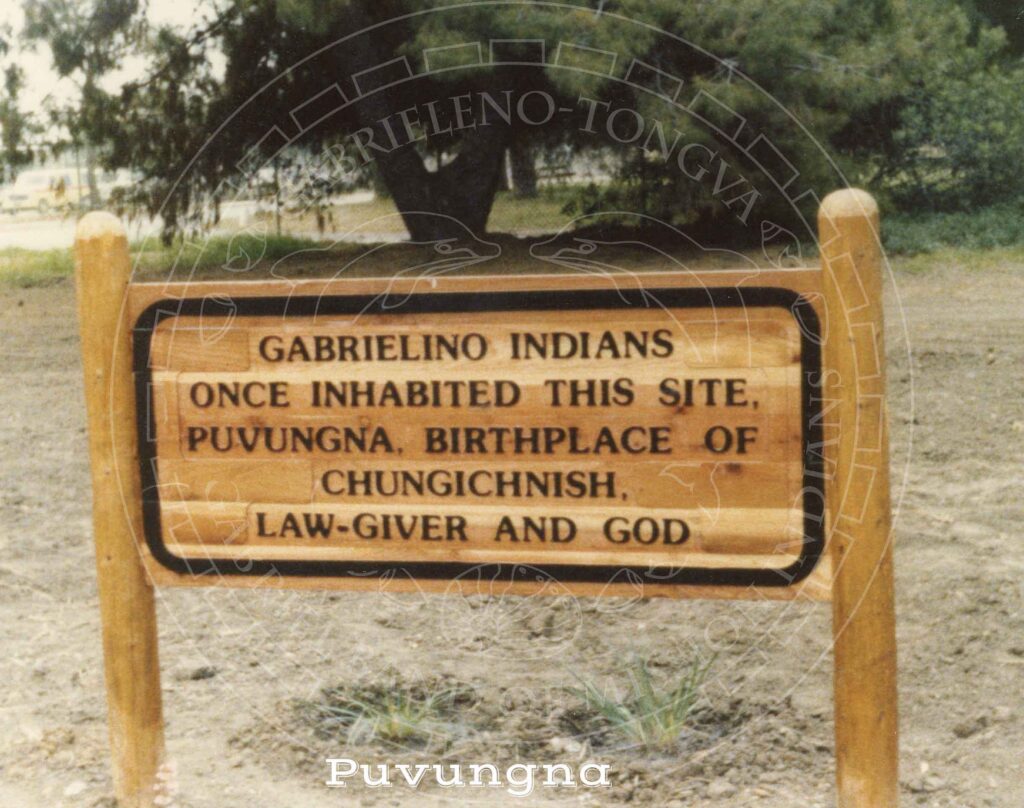
Sign handmade by SGBMI Tribal member marking the sacred plot and historical site on the land of the Puvungna village and birthplace of Chungichnish
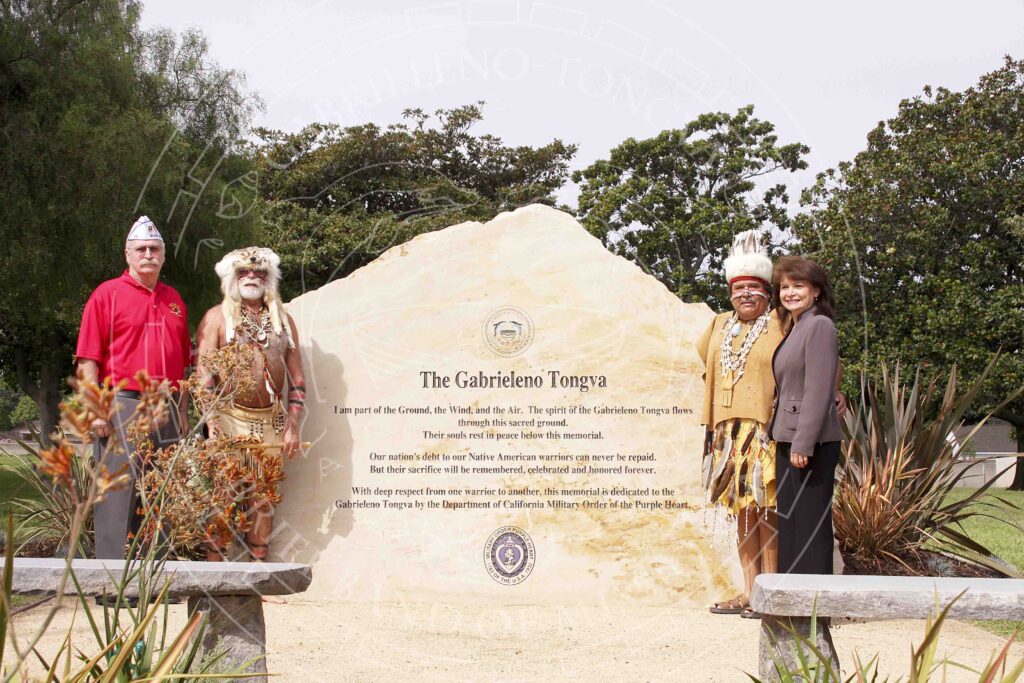
The Order of the Purple Heart, Long Beach Veterans Administration Dedicate monument to the Tribe knowing they share the village of Puvungna site with CSULB. Accepted by Chief Anthony Red Blood Morales and SGBMI members.
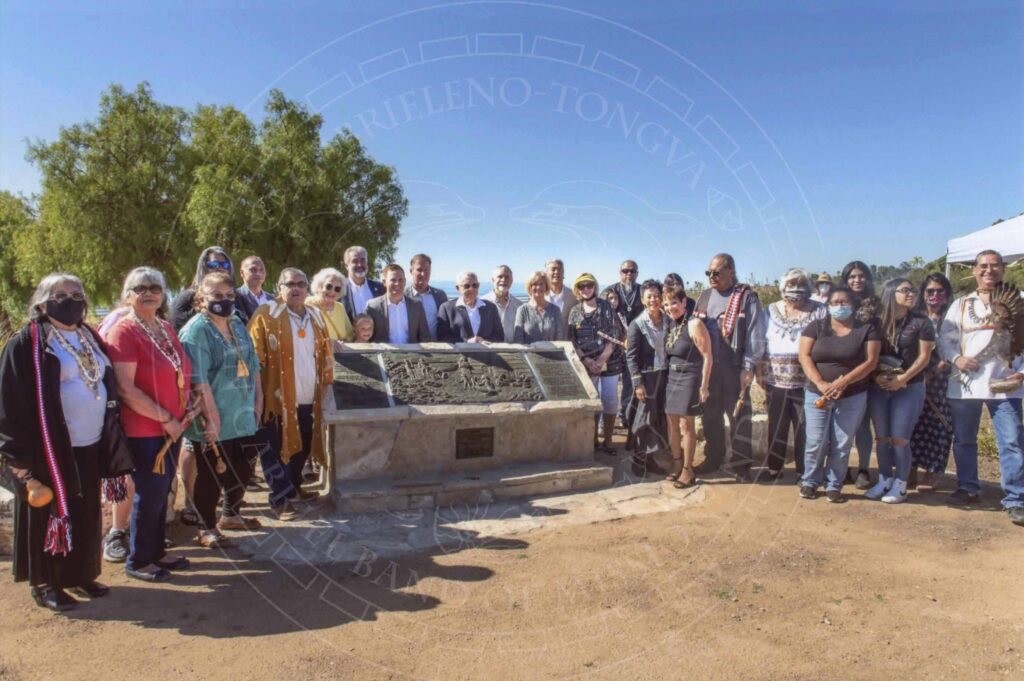
The Tribe participates in Land Acknowledgment , Abalone Cove Ecological Reserve, Palos Verdes. A local citizen researched the history of this area and was responsible for this dedication. City and County Officials attended. (2021)
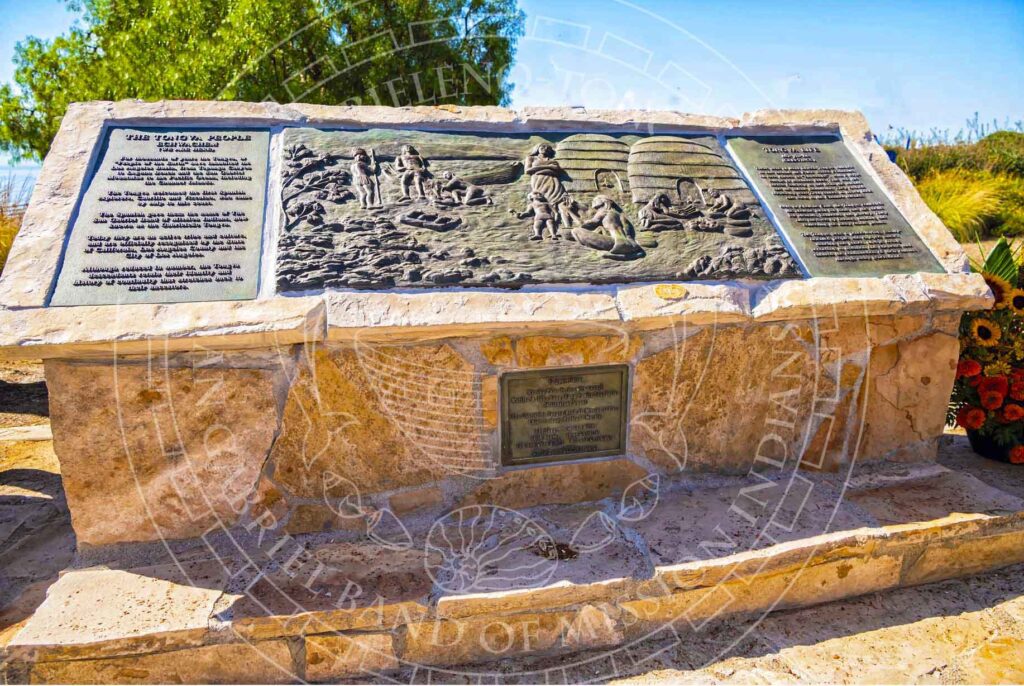
Abalone Cove Monument, Palos Verdes, California

War & Peace: A group of Los Angeles artists acknowledged a cross-section of WWII veterans in clay. Ancestor Joseph Morales was chosen to represent the Native American community. Joseph fought in the Battle of the Bulge. He was awarded the Silver Star for bravery. He was captured while conducting a perimeter check. He escaped and was recaptured 3 times. He observed all the atrocities of the Nazis while being forced marched to Stalag 12A
We encourage you visit our website: www.gabrieleno-nsn.us to explore our well documented history and our photo gallery located under the tool bar labeled Our History.
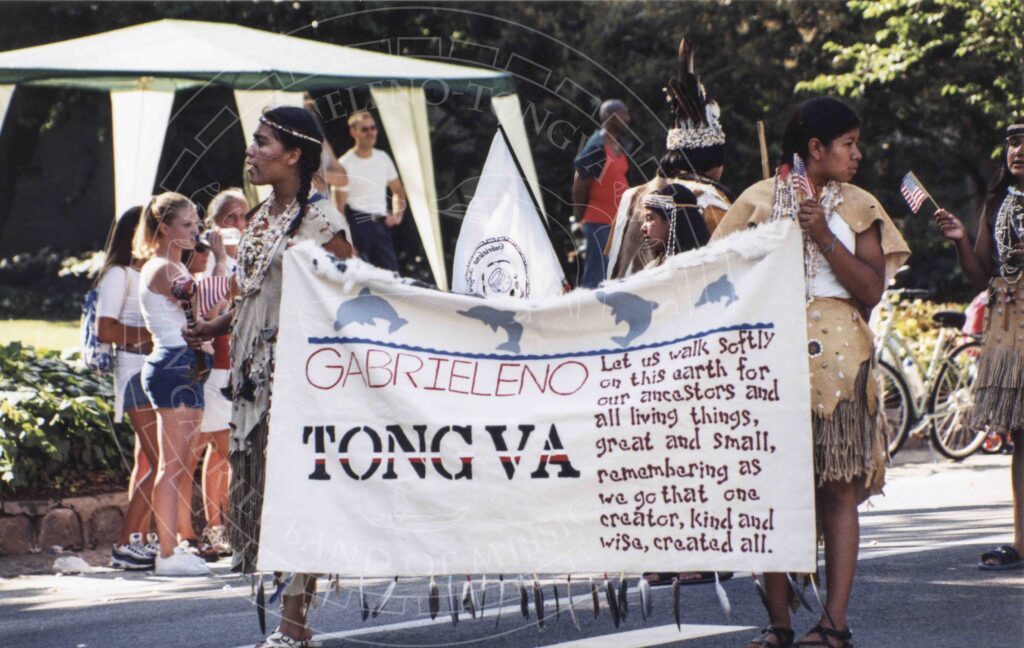
Participating & Representing our Tribe at a Fourth of July parade, Claremont Calif.
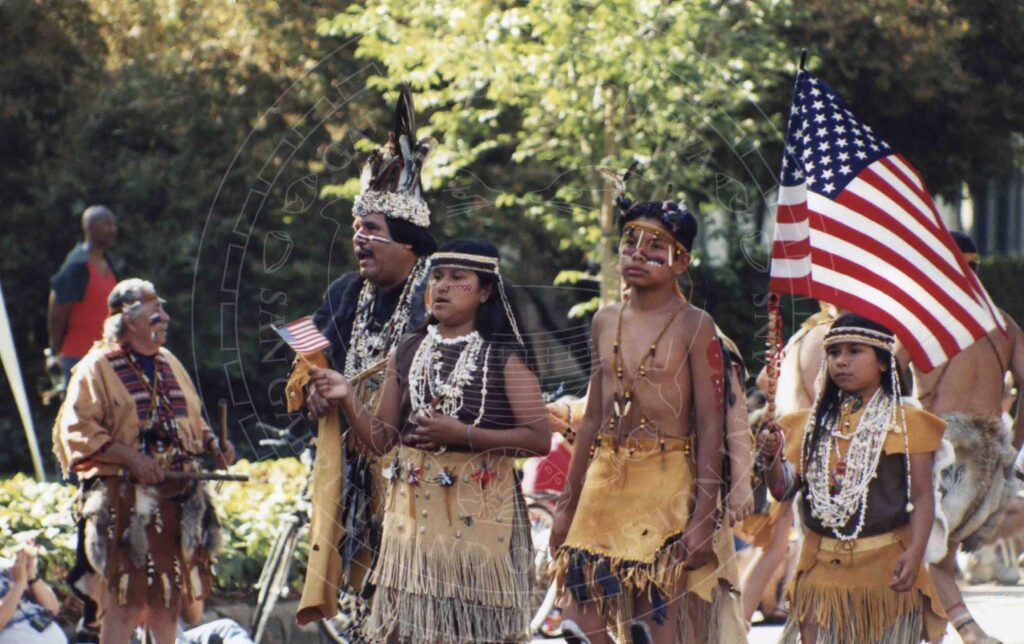
Participating and representing our Tribe at a Fourth of July parade, Claremont Calif.
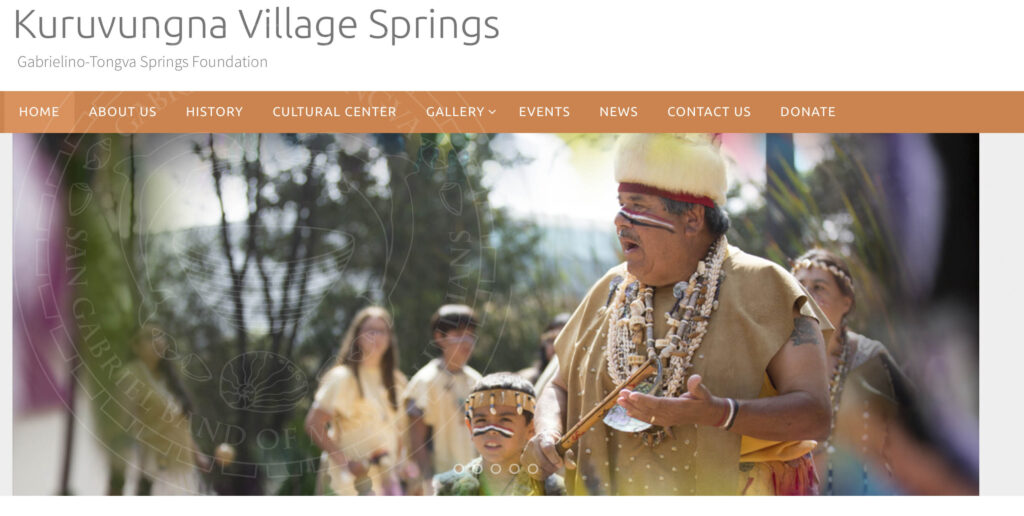
Kuruvungna Sacred Springs, Santa Monica Calif. Gabrieleno Tongva Springs Foundation formed 1991 by Tribal member Angie Dorome Behrens.
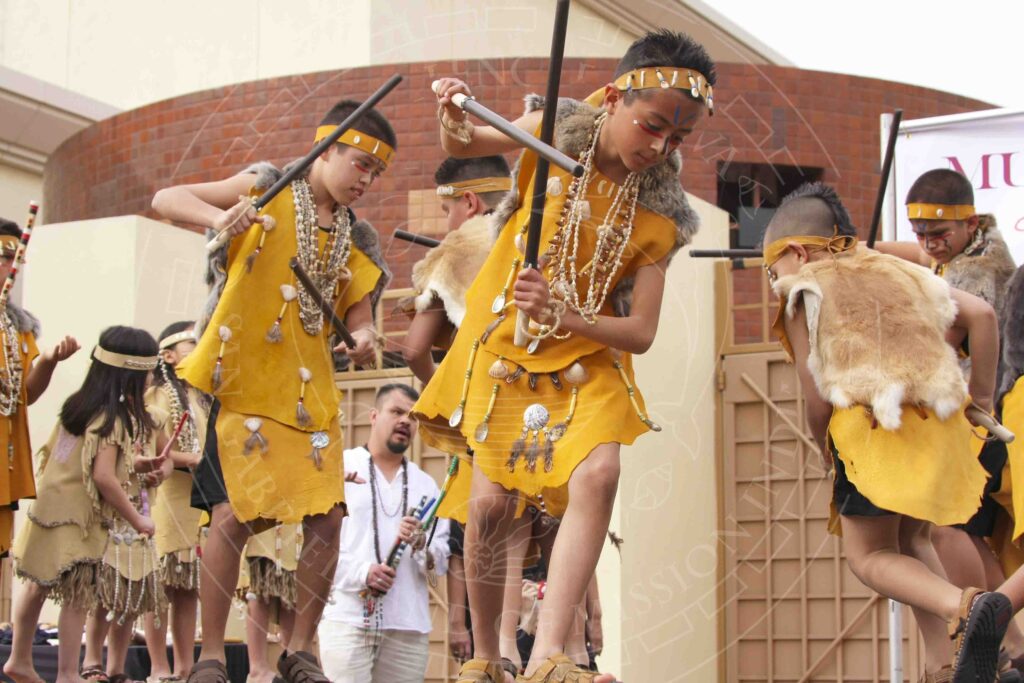
Tribal children performing at the Autry Museum (2009)
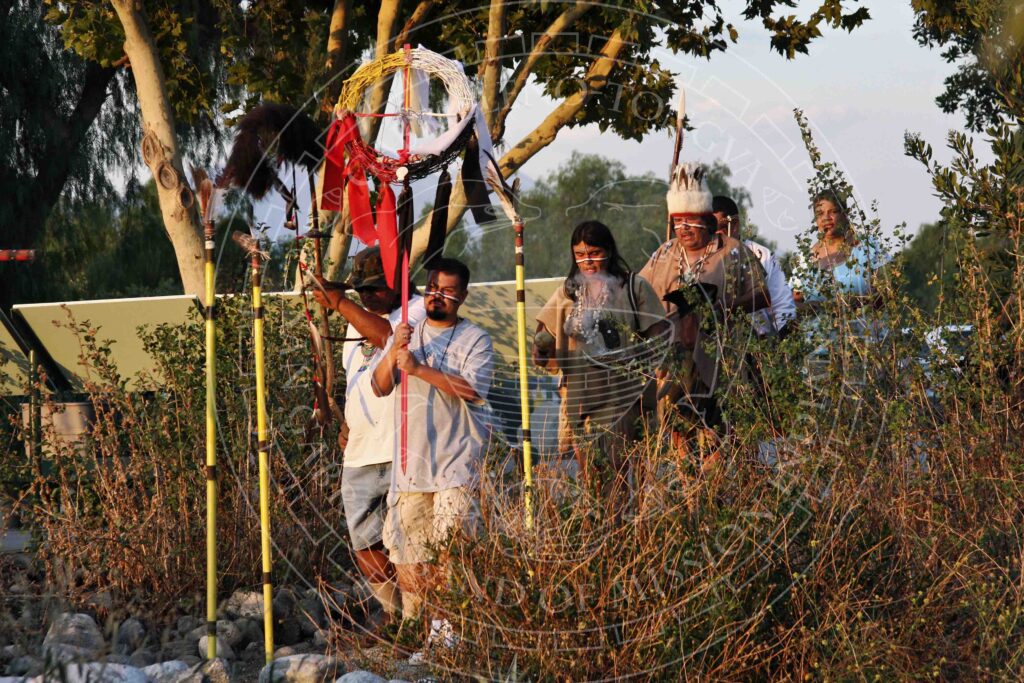
Opening for Naming Ceremony, Santa Fe Dam, Irwindale. An area known to be an Ancestors gathering area.
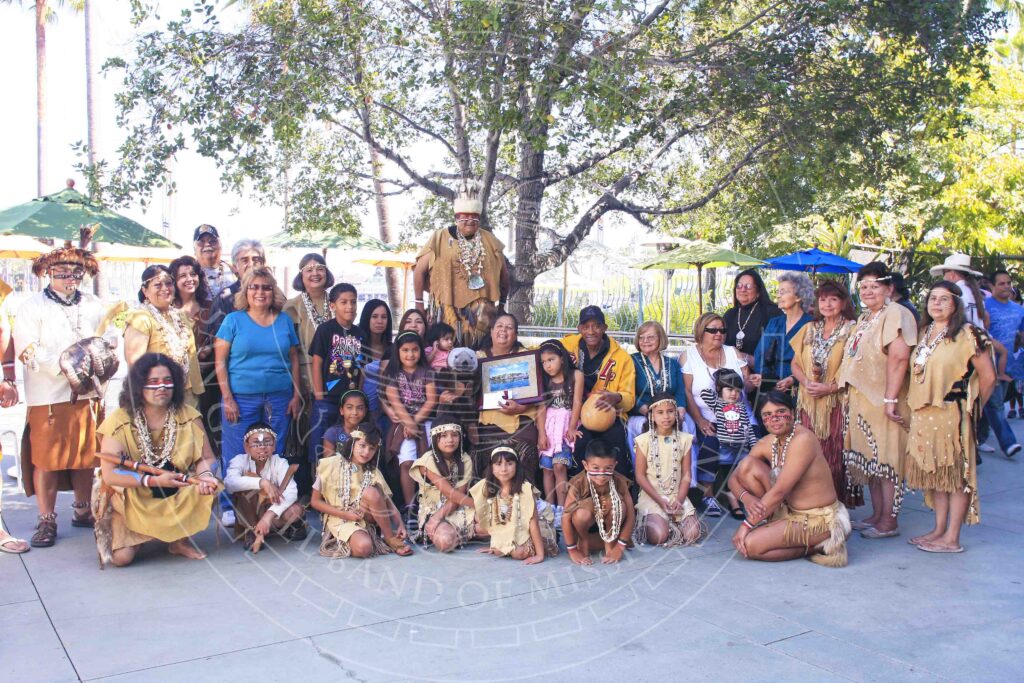
Tribal Elder Julia Bogany honored by the Long Beach Aquarium of the Pacific as Chief Anthony Morales had done in the past for contributions to the Native Community. Julia and Chief Anthony Morales photographed with members of their families and Tribal members.
We are referred to and known as:
Historical records have recognized four names for our tribe or band: Gabrieliño, Gabrieleño, San Gabriel Band of Mission Indians (SGBMI), Tongva (a name introduced in the late 1960s).
San Gabriel Band of Indians (We are the original & only.)
Gabrielino
Gabrieleno
Gabrieleno/Tongva
Tongva
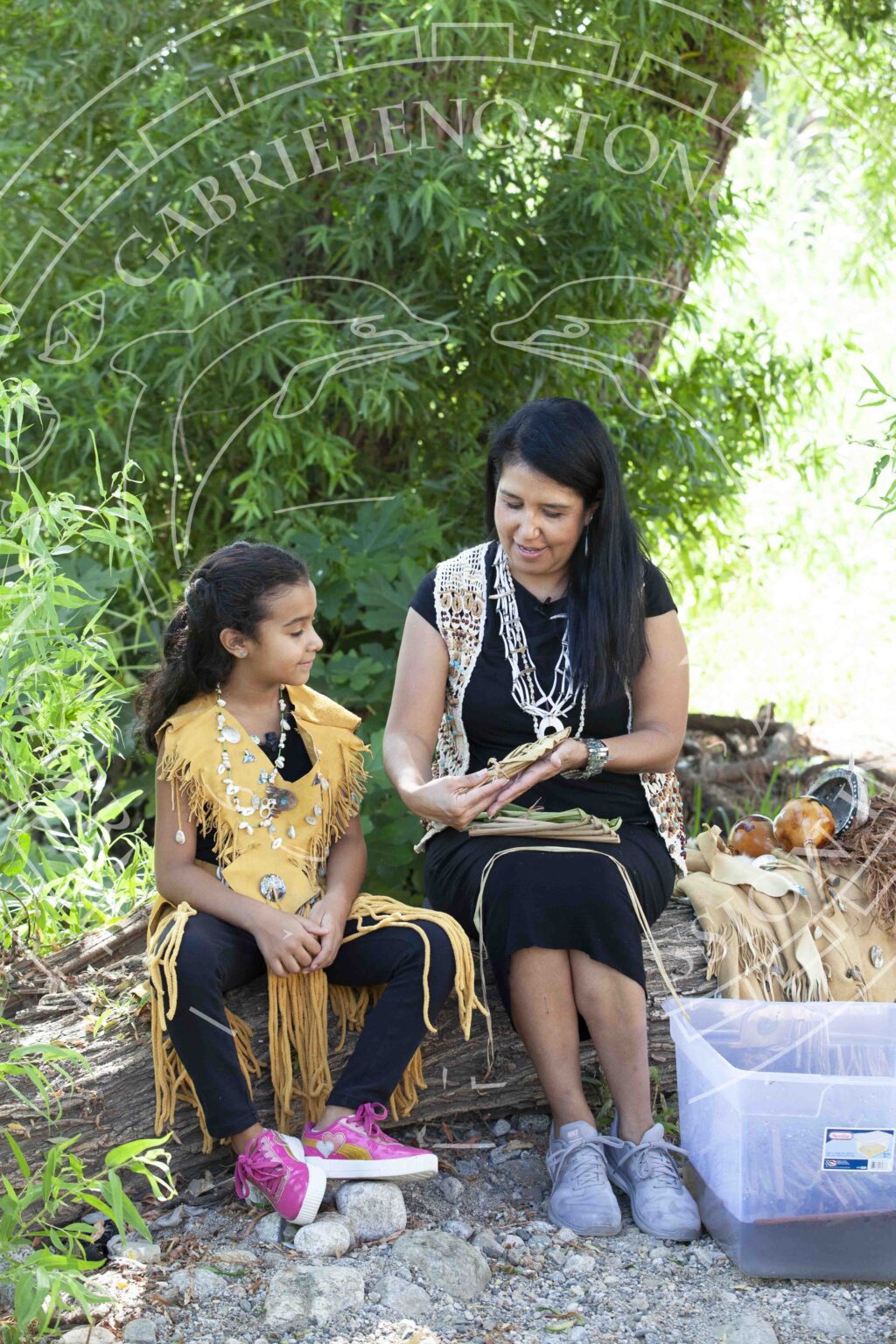
Tribal leader Kimberly Morales Johnson instructs Ellie Morales Recalde in the process of making a Tule reed doll. Kimberly and Ellie were asked to represent Gabrieleno/Tongva’s relationship to the Los Angeles River. (2020)
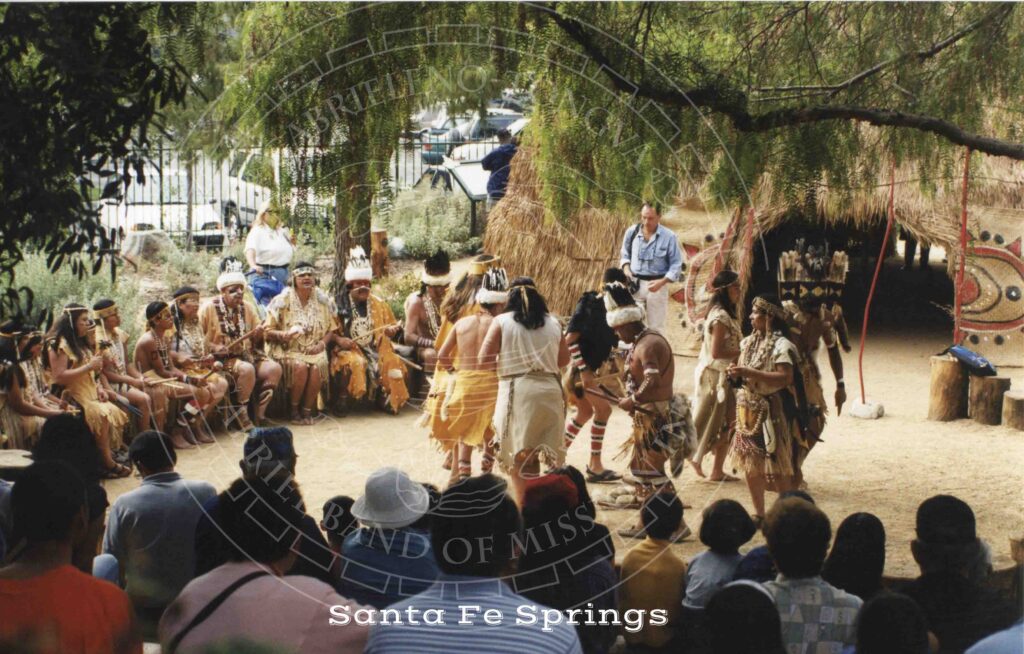
Heritage Park Santa Fe Springs. The City of Santa Fe Springs dedicated a section of the park for us to build village replica. (1999)
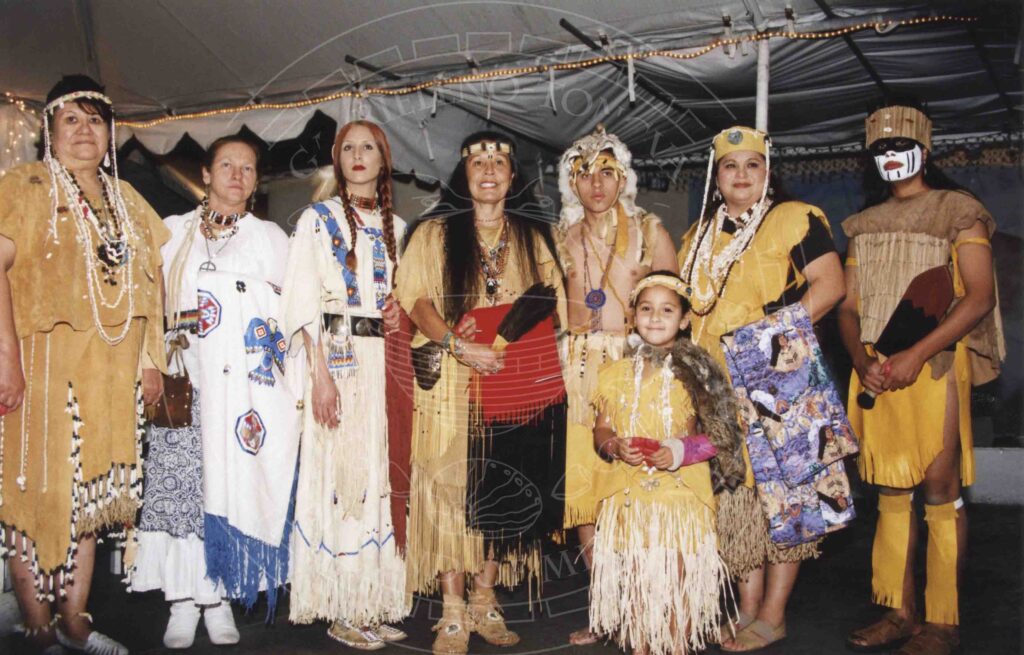
Tribal members participate in inter- tribal Gabrieleno/Ohlone Native American Fashion show, Pomona Calif.
Selected media clips:
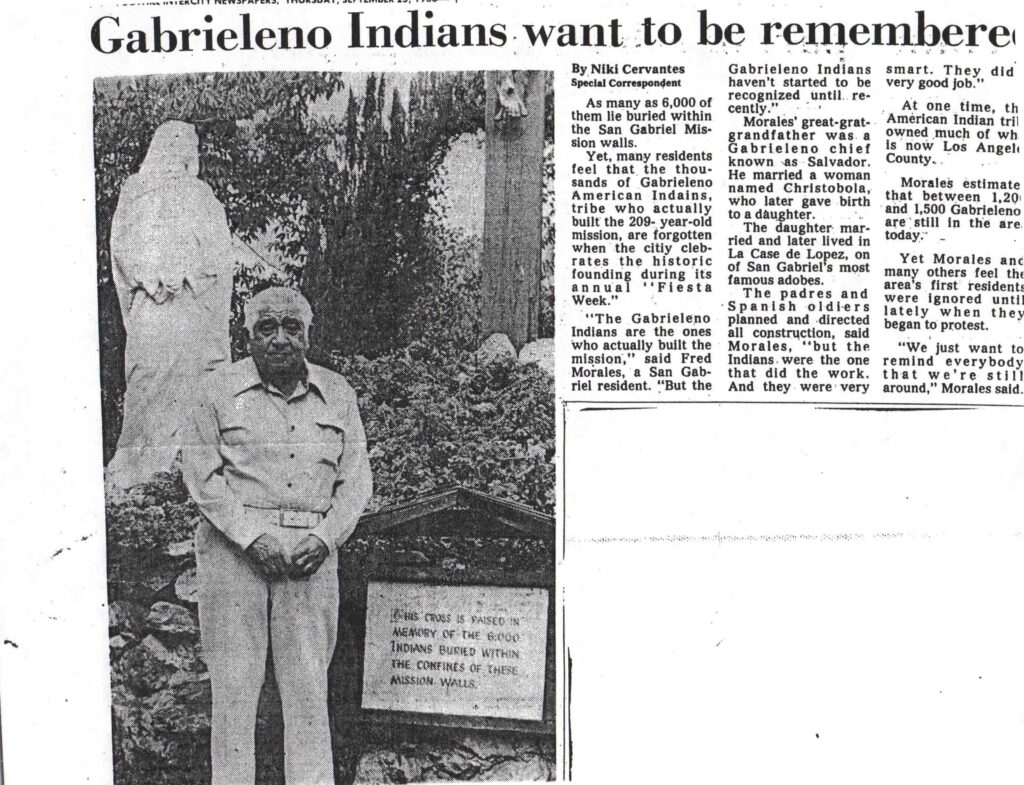
San Gabriel Band of Mission Indians Chief Fred “Sparky” Morales standing by statue and cross in San Gabriel Mission courtyard. The monument acknowledges the reported 6000 ancestors buried on Mission grounds (Los Angeles Times, 1980)
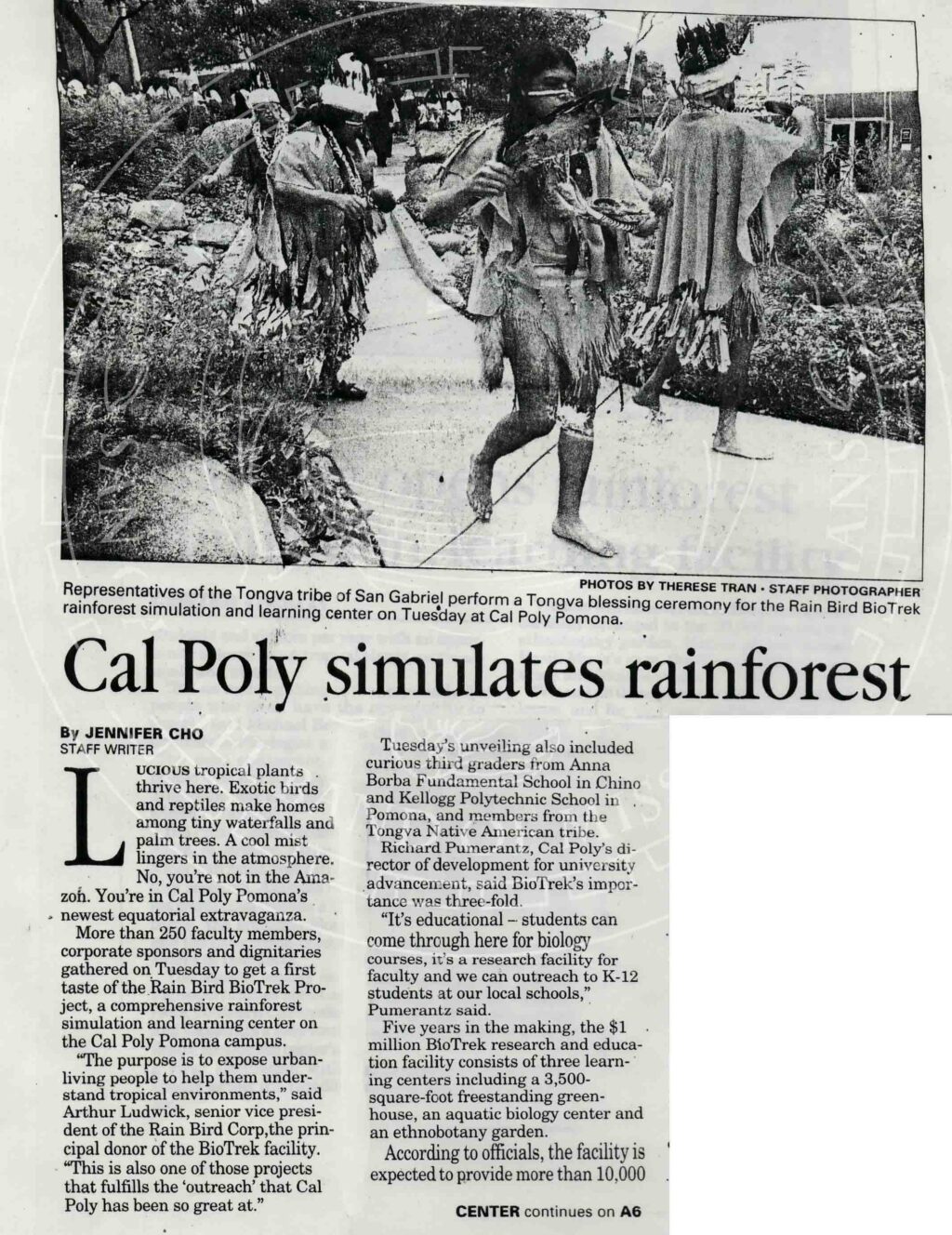
Religious leader Andrew Morales and Tribal members bless Cal Poly Rainbird BioTrek Project.
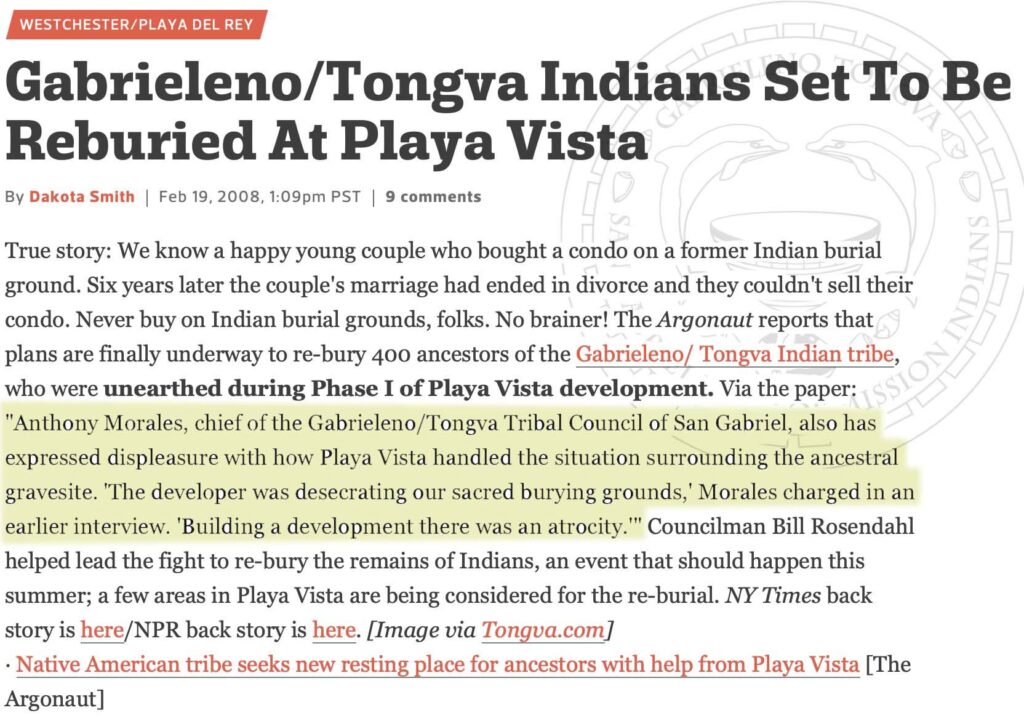
Playa Vista news article
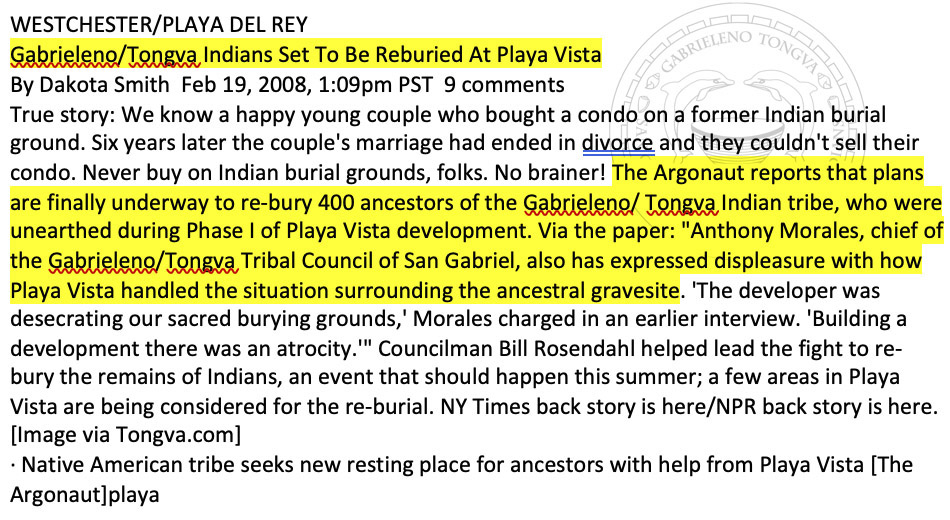
Playa Vista Article
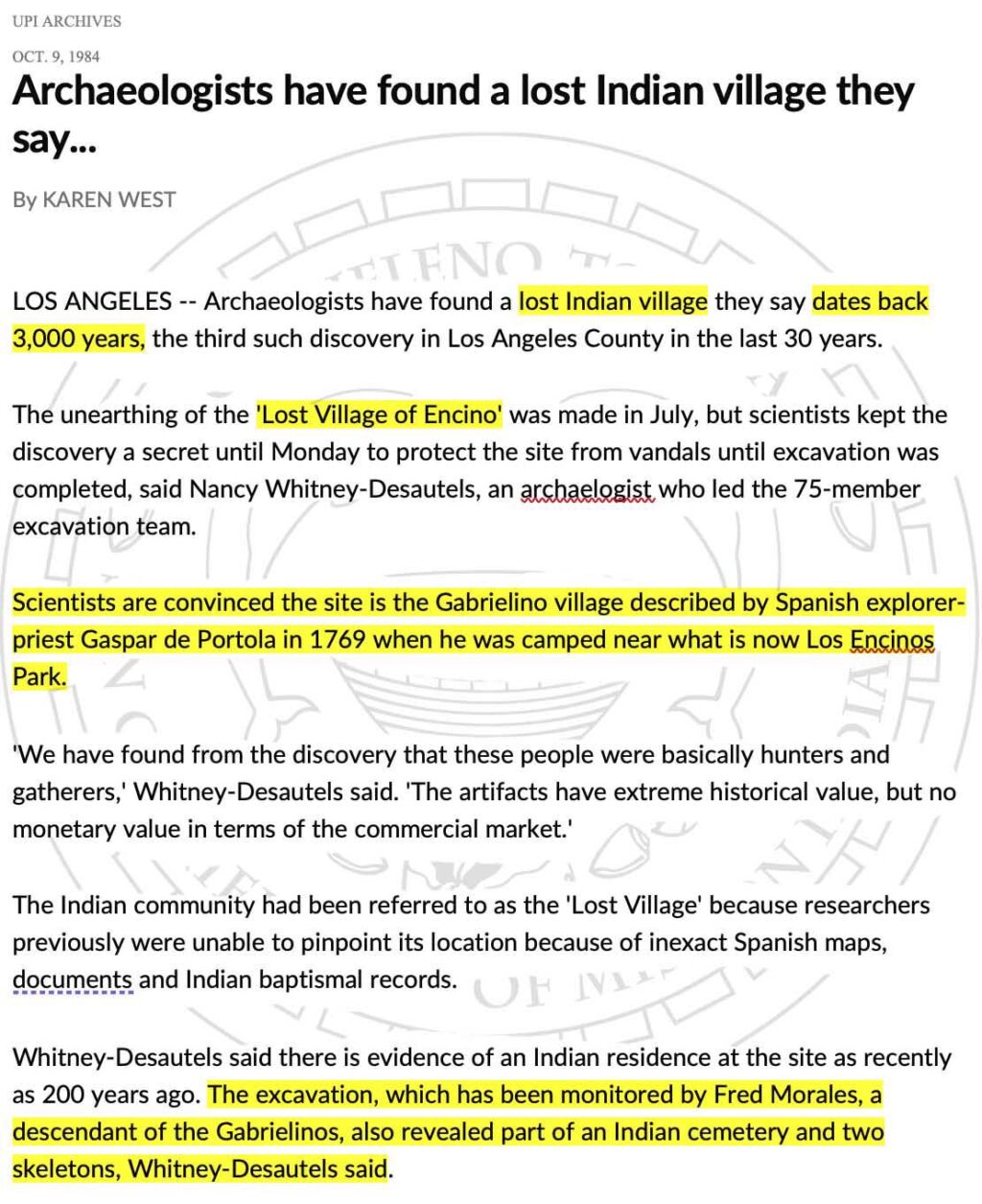
Article on the Lost Village of Encino found during development. SGBMI were designated the Most Likely Descendants, MLD’s for this site by the NAHC (1984)
